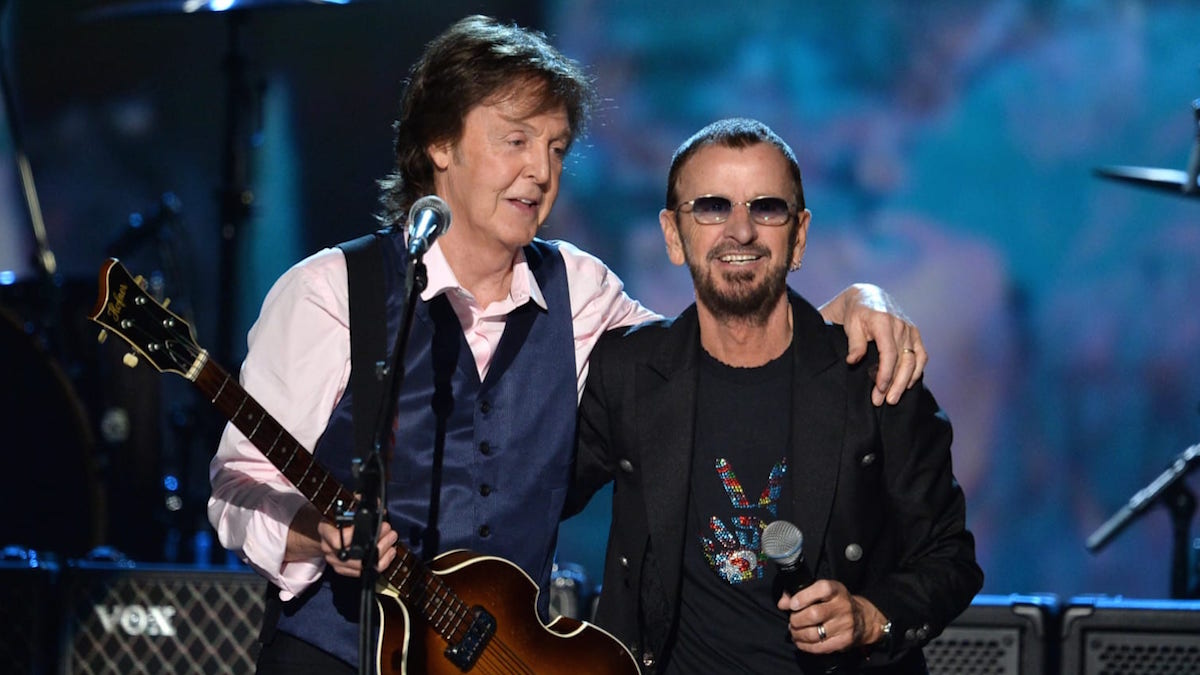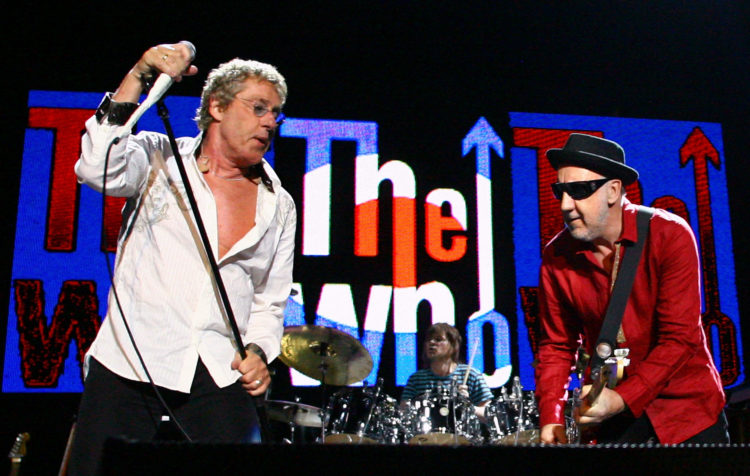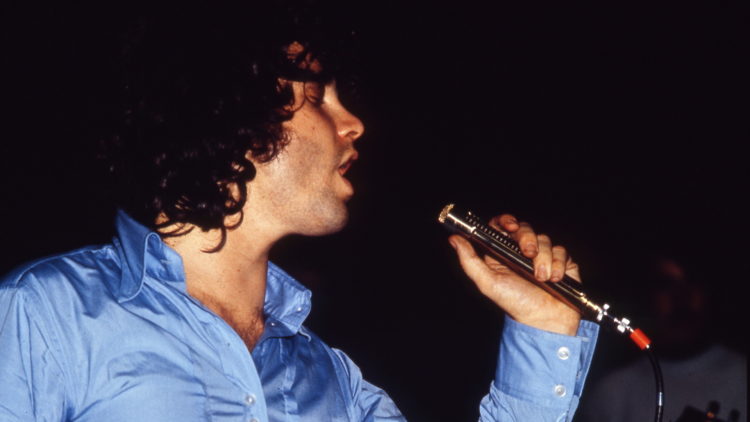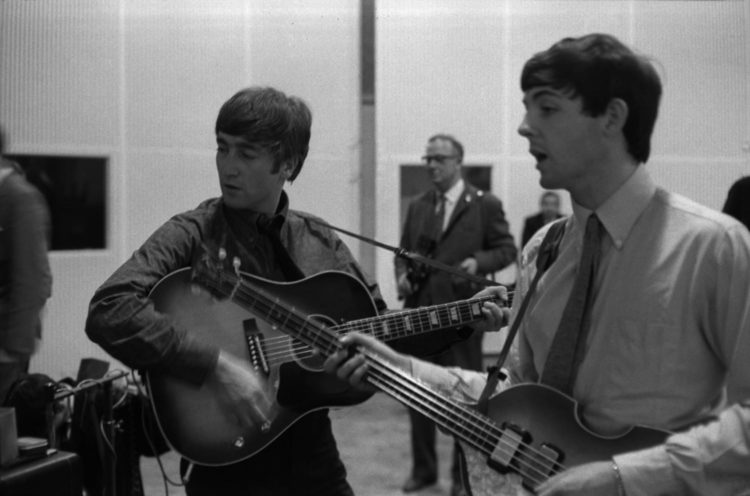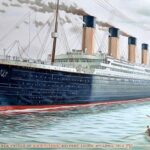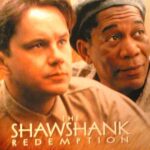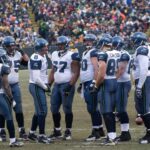Ask 20 people what the best song of all time is, and you’ll probably get 20 different answers. That’s the beauty of a great song: It has the power to move you on a personal level, which is far more important than what anyone else thinks.
However, in an effort to create a list of the all-time greatest songs, we considered the views of professional music critics and fans alike, via Rolling Stone’s 500 Greatest Songs of All Time and Ranker’s The Best Songs of All Time.
60. “Running Up That Hill” – Kate Bush
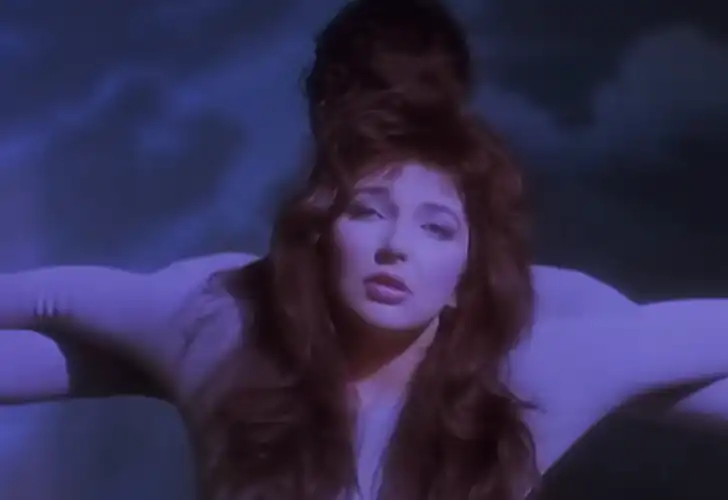
Originally, this song was called “A Deal with God”, but Bush changed it after her label worried about the title being controversial. It was the song that kicked off her album Hounds of Love in 1985. It was one of the 80s most resonant records. The point of the song was asking if a woman and a man could understand each other by switching places.
59. “The Message” – Grandmaster Flash And The Furious Five
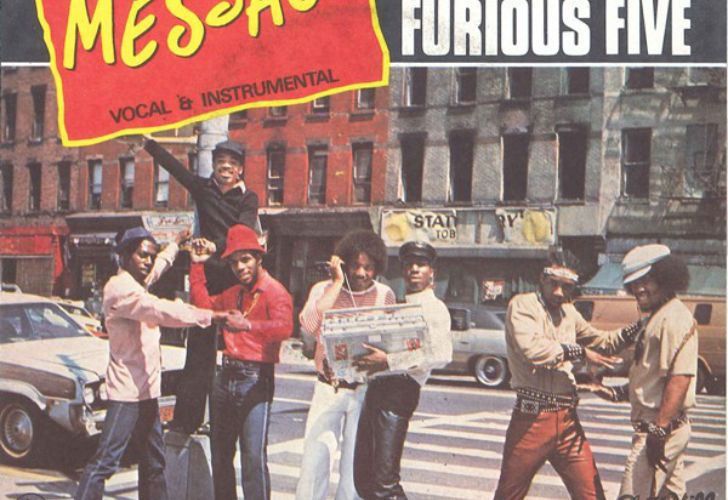
“The Message” was considered a breakthrough in hip-hop. It took the genre from party anthems to street-level ghetto blues. It was actually originally a poem written by schoolteacher Duke Bootee. Sylvia Robinson decided to make it a rap record with Melle Mel of the Furious Five. Although, they didn’t like how the song was advertised. It wasn’t Grandmaster Flash and the Furious Five after all, it was just Mel and Duke. That didn’t make the song any worse though.
58. “The Weight” – The Band
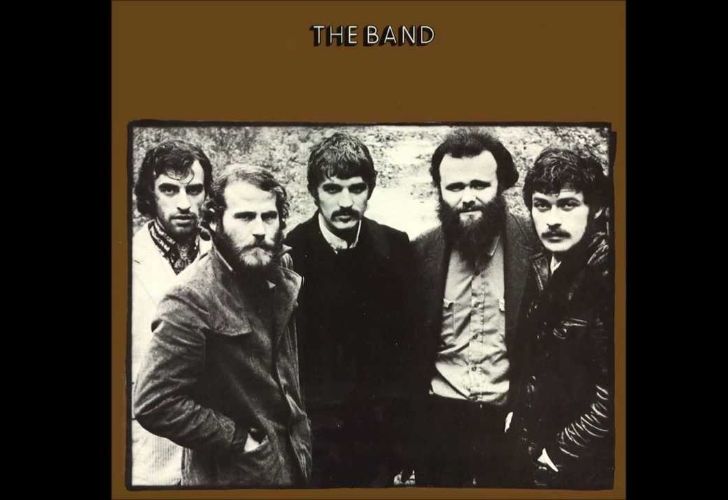
The Band was primarily known as Bob Dylan’s touring group, recording their debut album Music from Big Pink. And the song that really brought it all together was “The Weight”. It was a strange story of debt and burden, with a singalong chorus to boot. Robbie Robertson said that he was inspired to write the song after watching a film directed by Luis Buñuel. It was about the impossibility of “sainthood”.
57. “Family Affair” – Sly And The Family Stone
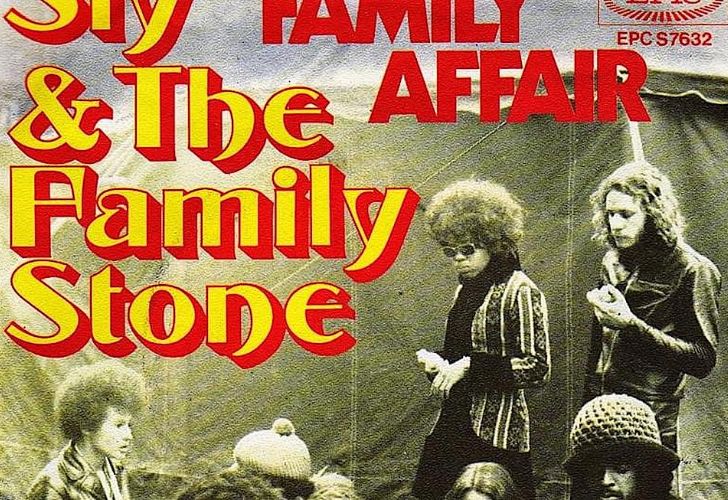
When their album, There’s a Riot Goin’ On, came out a Rolling Stone reporter mentioned a rumor that Stone played all the instruments himself. When someone asked him how many instruments Sly had played, his response was “I’ve forgotten man, what was left.” “Family Affair” was the leadoff single for the group, considered to be about the relationship within the band, family, and the Black Panthers.
56. “Work It” – Missy Eliot
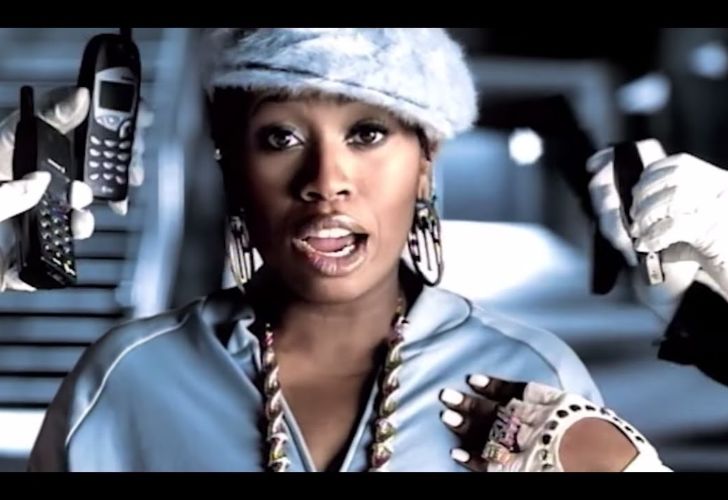
“Work It” really was the biggest hit from Missy Elliot and Timbaland. But that didn’t stop them from continuing to make music. The first time they had recorded the song, Tim had actually said, “That ain’t it”, and they returned to the studio. They went back four times in fact, eventually getting the backward-vocal hook everyone loves.
55. “Like A Prayer” – Madonna
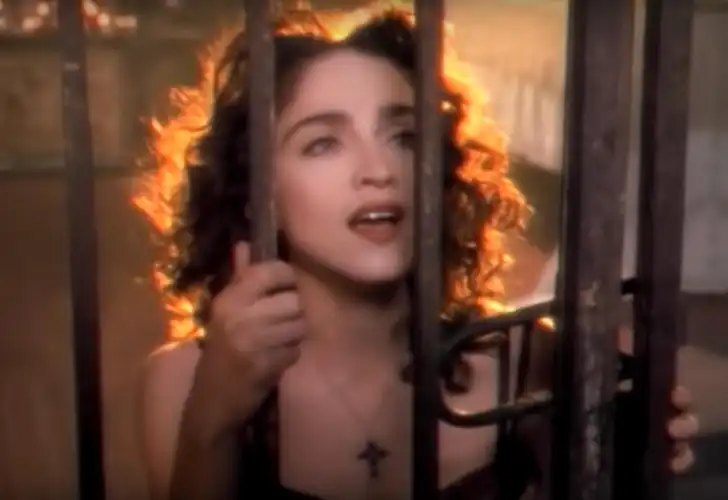
It’s interesting how Madonna was able to combine love, religion, and oral sex into a six-minute gospel-pop powerhouse. It actually debuted as part of a soft-drink ad campaign, but got yanked after the “blasphemous” music video hit MTV. Even the Vatican condemned it. But all that really did was make more people want to listen to the song.
54. “The Tracks Of My Tears” – Smokey Robinson And The Miracles
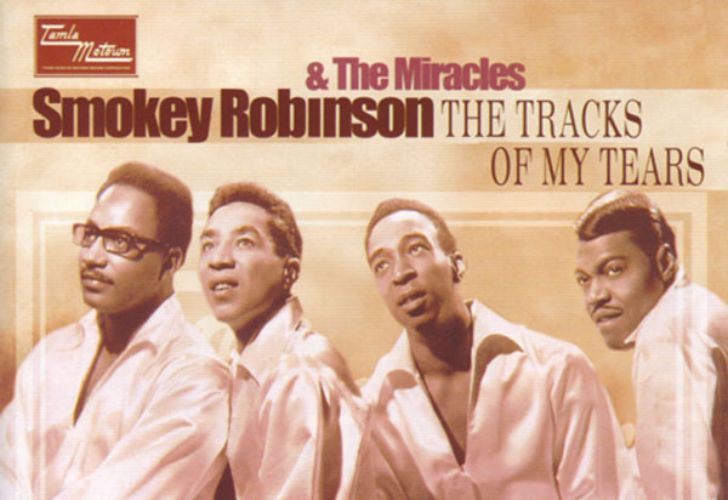
People say that audiences would actually break into tears when hearing Smokey Robinson and the Miracles perform this song. And it makes sense, it is called “The Tracks of my Tears”. Pete Moore of the Miracles said that it “tapped into their emotions”. Pete Townshend was so obsessed with the way Robinson put across the word “substitute” in the song he ended up writing the 1966 hit “Substitute” by the Who.
53. “I Feel Love” – Donna Summer
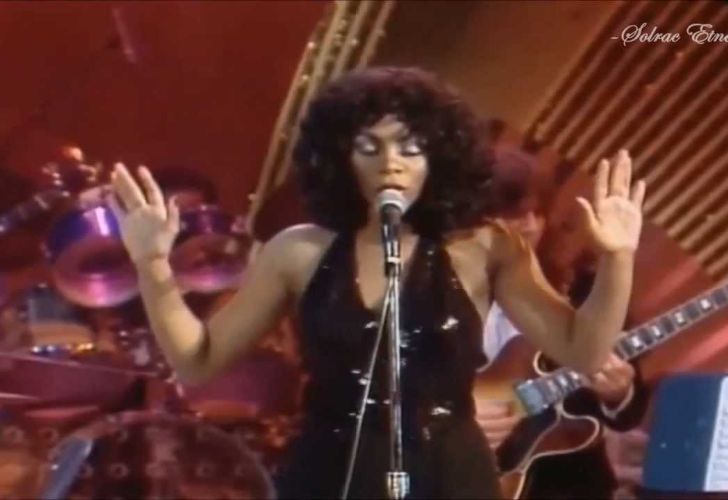
Donna Summer wasn’t very impressed when Giorgio Moroder presented her with “I Feel Love”. She actually said in an interview that she had finished it as a joke. However, the song still had a major impact on dance music. Getting rid of disco’s fluffy orchestrations for throbbing strobe-light-synth minimalism became a staple of Euro disco. This started a wave of electronic music to come.
52. “Walk On By” – Dionne Warwick
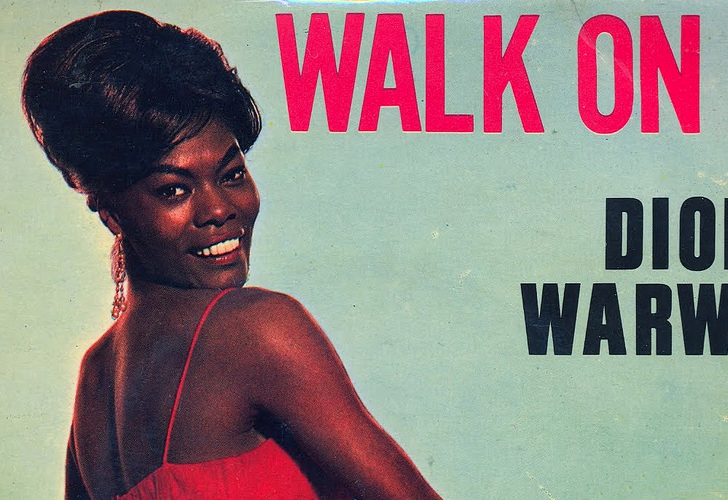
Dionne Warwick was initially just a backup singer, but also cut her own demos for Brill Building songwriters Burt Bacharach and Hal David. And the classic “Walk on By” is what solidified her rise to stardom. A ballad set to a bossa nova beat, but with a downcast theme. It was originally relegated to the B side of “Any Old Time of the Day”, but DJ Murray and K made sure listeners flipped over their records when they got them. And that’s what got the song its praise.
51. “Gasolina” – Daddy Yankee
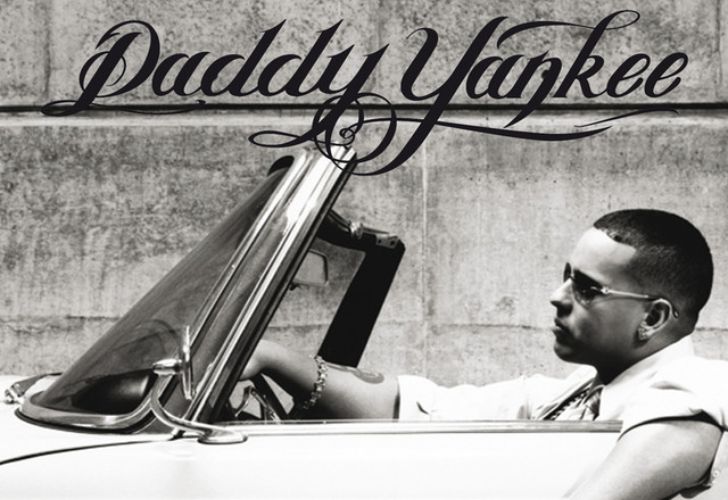
The rapper from Puerto Rico created an excellent and playful phrase that wormed its way into audiences’ ears; “echa, mija, como te gusta la gasolina!” It was a playful phrase lobbed at young woman who were looking for the sleekest rides to get to a party. It morphed into a ubiquitous chorus that began a global interest in reggaeton. Daddy Yanke delivered his verses with so much power that the song sounded like it might combust.
50. “Gimme Shelter” — The Rolling Stones
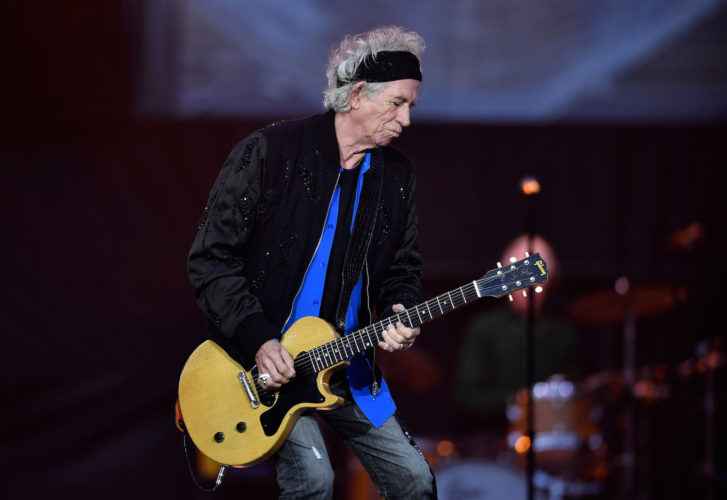
For a song that Keith Richards wrote in 20 minutes, “Gimme Shelter” made a big impression. The opening track to the 1969 Rolling Stones album “Let It Bleed”, it was never released as a single but has been included in many compilation records and has been a staple of the band’s live gigs. During their 50th anniversary tour in 2012, the Rolling Stones sang this song with Lady Gaga, Mary J. Blige and Florence Welch.
49. “One” — U2
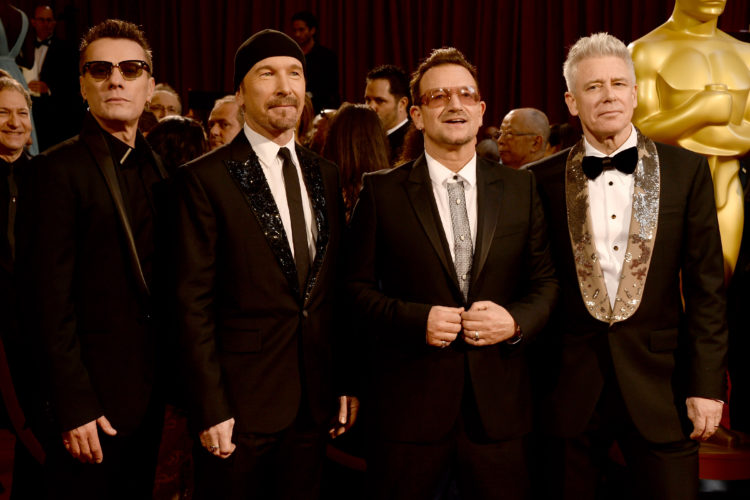
The third track on U2’s 1991 album “Achtung Baby”, “One” was actually a spin-off from their second single “Mysterious Ways”. According to Rolling Stone, the Edge suggested two ideas for the bridge and Bono liked one of them so much, he wrote a whole new set of lyrics. “One” may be a wedding favorite, but that wasn’t what the band had in mind.
“People have told me they play it at their wedding,” the Edge said. “And I think, ‘Have you listened to the lyrics? It’s not that kind of a song.'”
48. “No Woman, No Cry” — Bob Marley
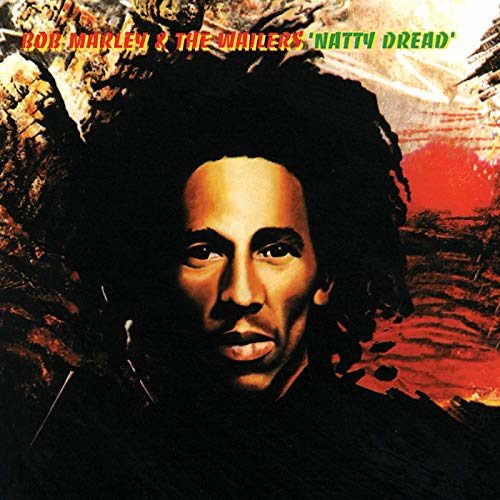
The best-known version of “No Woman, No Cry” isn’t the original version (on the 1974 studio album “Natty Dread”); it’s the version on the following year’s “Live!” — recorded at the Lyceum Theatre in London on July 17, 1975, as part of Marley’s Natty Dread Tour.
This song didn’t just change Marley’s life; he gave a songwriting credit to his childhood friend Vincent “Tata” Ford, which helped Ford keep his Kingston soup kitchen afloat.
47. “You’ve Lost That Lovin’ Feeling” — The Righteous Brothers
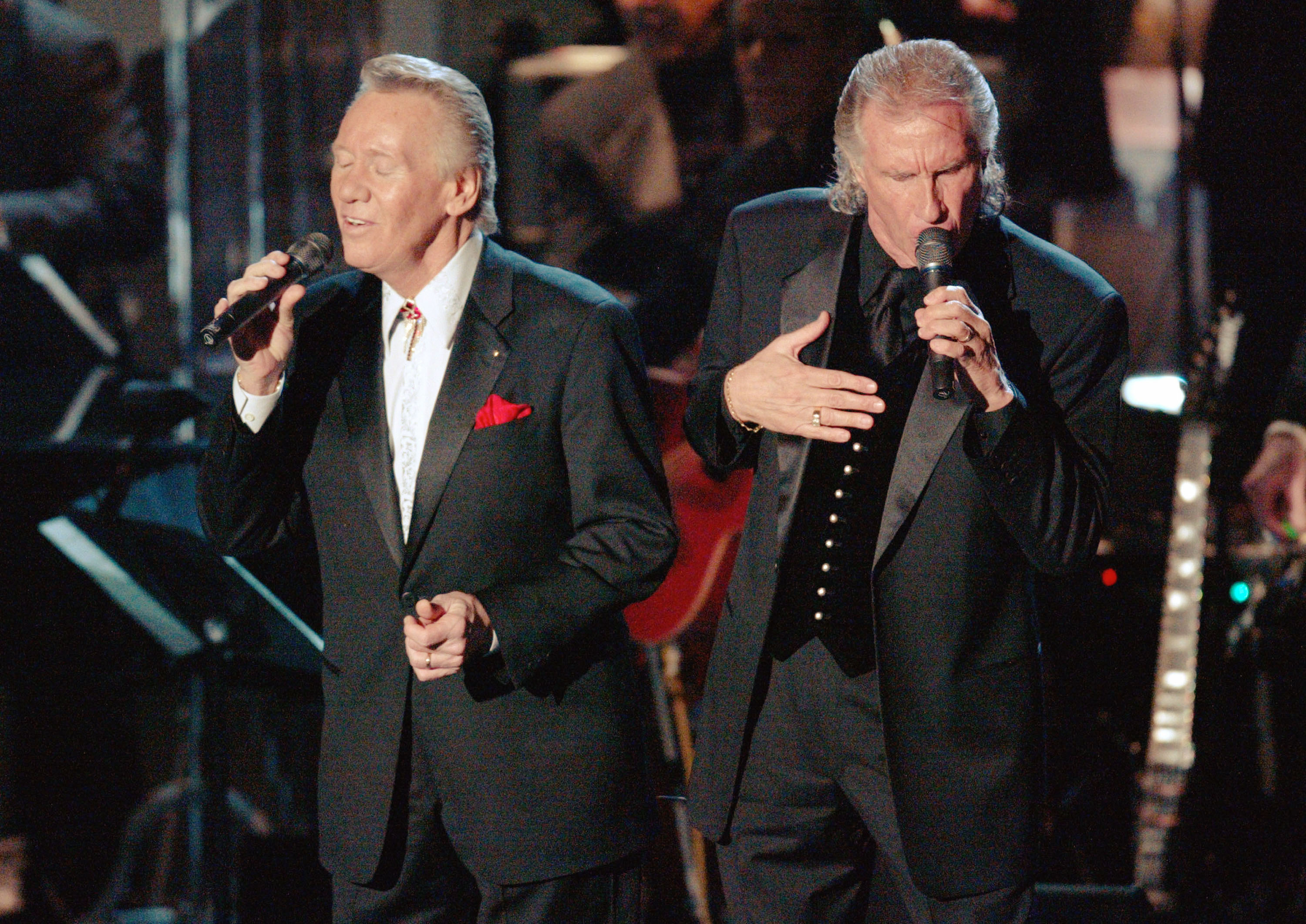
“You’ve Lost That Lovin’ Feeling” was first recorded by The Righteous Brothers in 1964 and reached the top of the charts in both the U.S. and the U.K. It was also the fifth-bestselling song in the U.S. in 1965. The song has been covered by a number of other artists, including Dionne Warwick and Hall and Oates, but no version has the impact of Bill Medley’s deep vocal, without instruments, in the intro: “You never close your eyes anymore when I kiss your lips.”
46. “Sympathy For The Devil” — The Rolling Stones
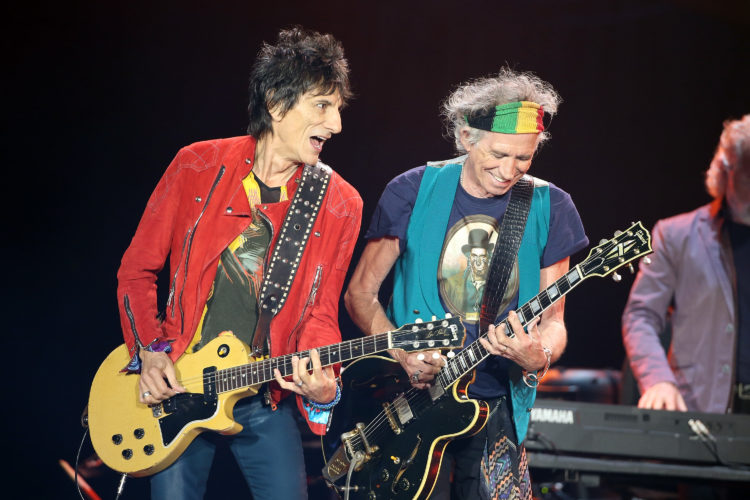
The Rolling Stones are no strangers to controversy when it comes to their music, and their 1968 release, “Sympathy for the Devil”, from the album “Beggars Banquet” was no different. The song caused a stir among some religious groups, who feared that the Stones were devil-worshippers. However, in a 1995 interview with Rolling Stone, Mick Jagger said the song was an idea he got from French writing.
“I just took a couple of lines and expanded on it,” he said. “I wrote it as sort of like a Bob Dylan song.”
45. “I Walk The Line” — Johnny Cash
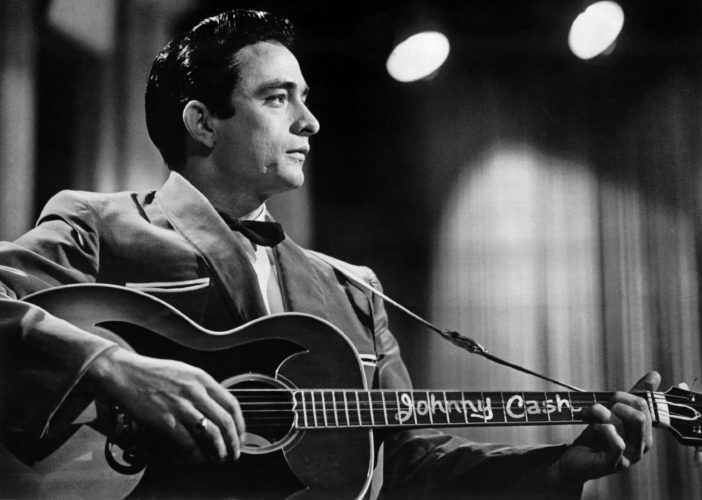
While he was stationed in Germany with the Air Force, Johnny Cash started working on “I Walk the Line”. It was many years later, in 1956, when he decided to record it, but realized that the original tape was damaged. However, this ended up being a bonus; he embraced the unique sound and added even more interest by wrapping a piece of wax paper around the strings of his guitar. And it gave him his first No. 1 on the Billboard charts.
“It was different than anything else you had ever heard,” Bob Dylan told Rolling Stone. “A voice from the middle of the Earth.”
44. “River Deep – Mountain High” — Ike and Tina Turner
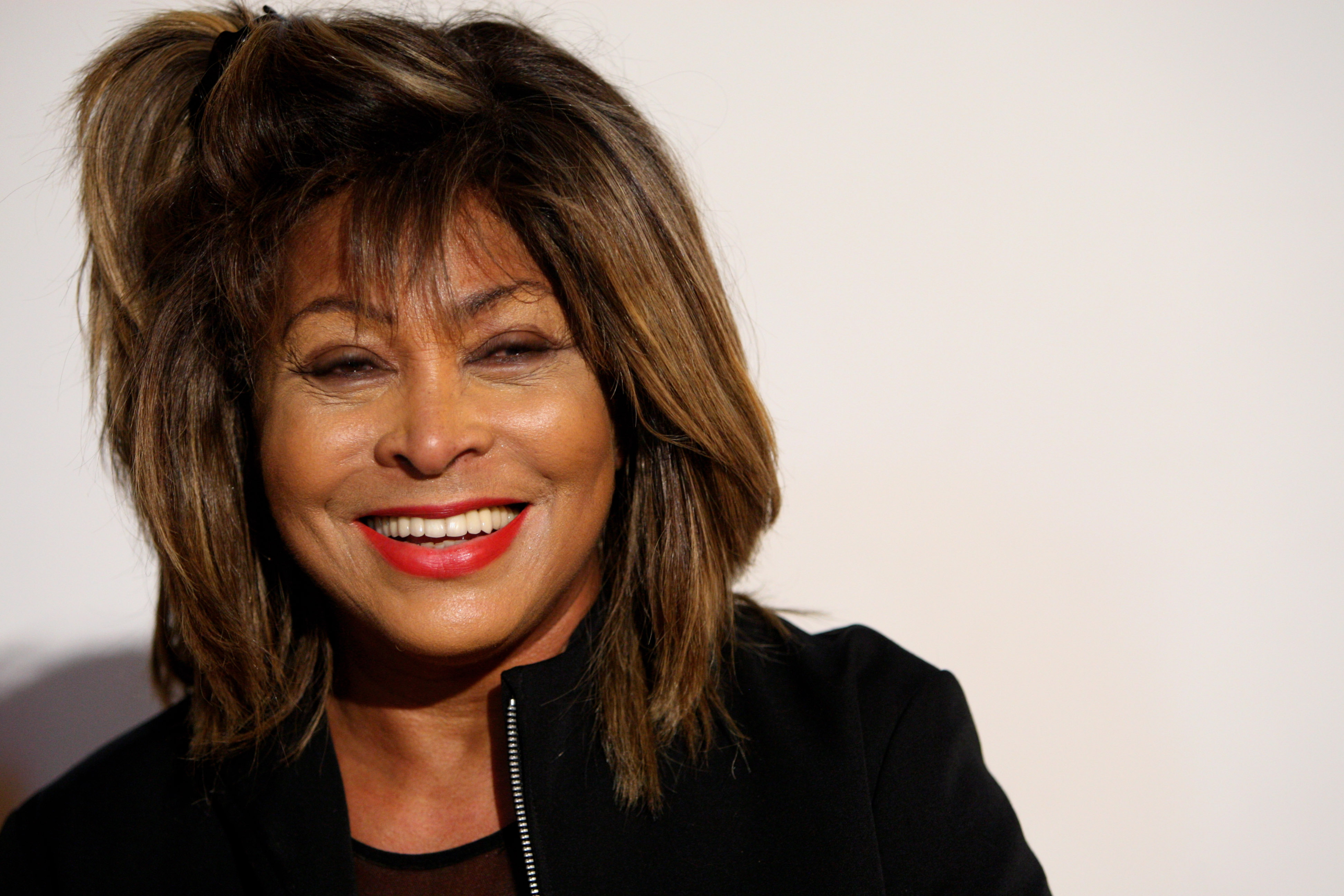
Producer Phil Spector considers Ike and Tina Turner’s 1966 release of “River Deep – Mountain High” to be his best work, and plenty of people agree. It ranks at No. 33 on Rolling Stone’s 500 Greatest Songs of All Time and it was inducted into the Grammy Hall of Fame in 1999. For Tina Turner, putting the song together was a memorable experience — Spector made her sing it over and over for several hours until he got the “perfect” vocal.
“I must have sung that 500,000 times,” Turner told Rolling Stone. “I was drenched with sweat. I had to take my shirt off and stand there in my bra to sing.”
43. “Help!” — The Beatles
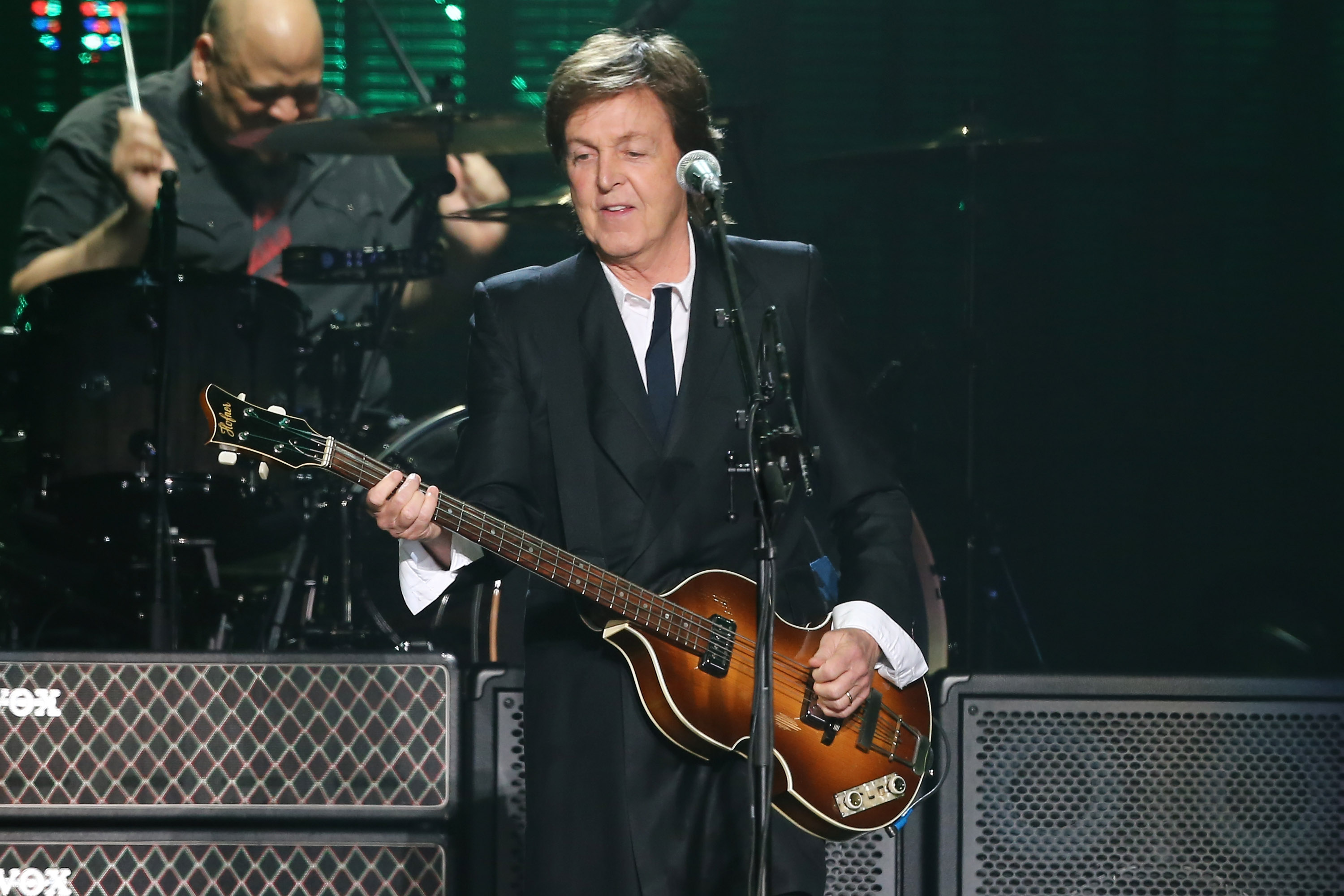
In a 1980 interview with Playboy, John Lennon said the song “Help!” — released as a single in July 1965, at the height of Beatlemania — had hidden depths that even he wasn’t aware of when he wrote it.
“Most people think it’s just a fast rock ‘n’ roll song,” he said. “Subconsciously, I was crying out for help. I didn’t realize it at the time; I just wrote the song because I was commissioned to write it for the movie.” He later told Rolling Stone he didn’t like the recording: “We did it too fast, to try and be commercial.”
42. “People Get Ready” — The Impressions
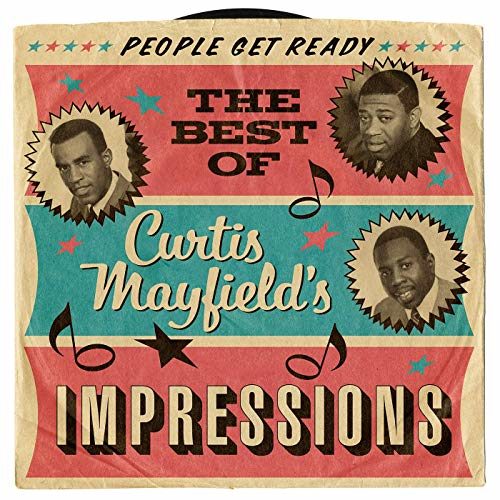
“People Get Ready” is The Impressions’ best-known hit. Written by Curtis Mayfield, it reached No. 3 on the Billboard R&B chart, became an unofficial anthem for the Civil Rights Movement and was named as one of the top 10 best songs of all time by Mojo Magazine.
Mayfield himself said of the song, “That was taken from my church or from the upbringing of messages from the church. Like there’s no hiding place and get on board, and images of that sort. I must have been in a very deep mood of that type of religious inspiration when I wrote that song.”
41. “In My Life” — The Beatles
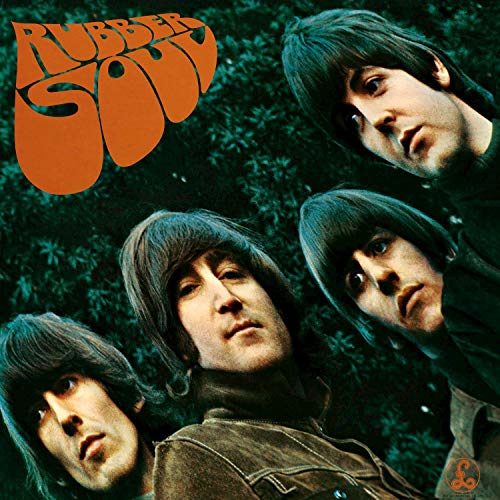
If it had been up to John Lennon, “In My Life”, the Beatles’ 1965 single from the album “Rubber Soul,” would get a place on all the “best of” lists — at least from the band’s back catalog. Lennon described it as “my first real, major piece of work,” adding that “up until then it had all been glib and throwaway.”
According to Lennon’s friend and biographer Peter Shotton, the lines “Some [friends] are dead and some are living/In my life I’ve loved them all” referred to Stuart Sutcliffe (who died in 1962) and to Shotton himself.
40. “Layla” — Derek And The Dominos
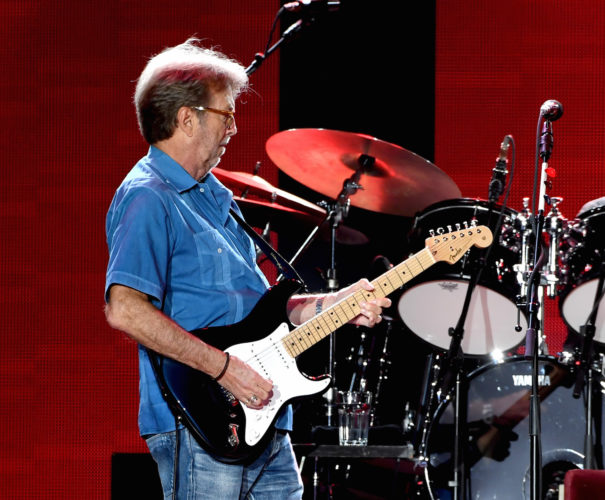
Eric Clapton was so moved by Persian poet Nizami Ganjavi’s 12th-century book, “The Story of Layla and Majnun” that he wrote “Layla”, which is often hailed as one of the best rock songs of all time. Clapton drew additional inspiration from his own life and his then-unrequited love for Pattie Boyd, the wife of his friend and fellow musician George Harrison. Ultimately, it all worked out — Clapton and Boyd eventually got together and were married for almost 10 years.
“It was the heaviest thing going on at the time,” Clapton told Rolling Stone in 1974. “That’s what I wanted to write about most of all.”
39. “(Sittin’ On) The Dock Of The Bay” — Otis Redding
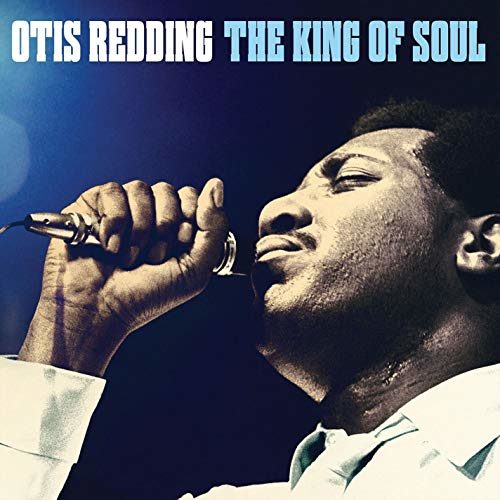
Otis Redding wrote the lyrics to what’s possibly his best-known song while he was literally sitting on the dock of the bay — or at least, sitting on a rented houseboat in Sausalito, California, after the Monterey Pop Festival in the summer of 1967. (The sound of crashing waves on the backing track are all real.) Redding finished writing and recording the song with guitarist Steve Cropper a few months later in Memphis, only days before Redding was killed when his private plane crashed into Lake Monona in Madison, Wisconsin.
“(Sittin’ On) The Dock of the Bay” was the first posthumous single to reach No. 1 in the U.S., and it reached No. 3 in the U.K.
38. “Let It Be” — The Beatles
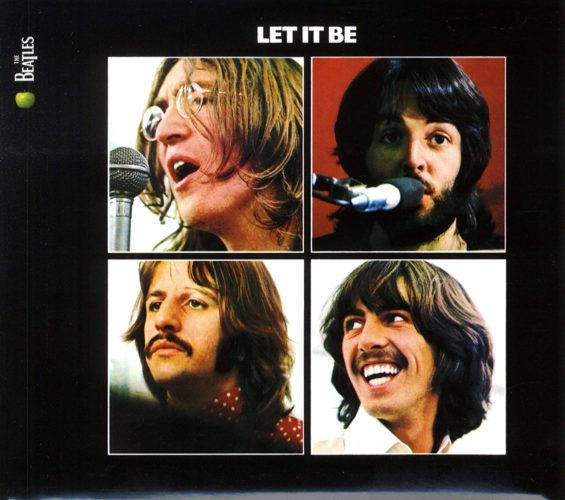
Often, the most tumultuous times spawn great creativity, and this was certainly true for Paul McCartney in 1968. The Beatles were falling apart, but McCartney found some comfort in a dream in which his late mother, Mary, gave him some words of advice. This inspired the opening lines of “Let it Be”: “When I find myself in times of trouble/Mother Mary comes to me”.
“Let it Be” was the title track of what would be The Beatles’ last studio album, released in March 1970, and it was the last single released by the band before their split was announced to the press.
37. “The Times They Are A-Changin” — Bob Dylan
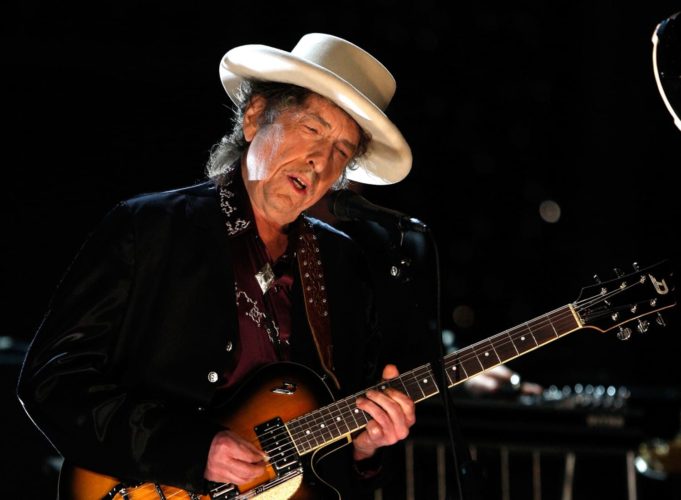
Written by Bob Dylan as the title track of his 1964 album, “The Times They Are a-Changin” became an anthem for change. When it was released in the U.K. in 1965, it reached No. 9 on the singles chart; in the U.S., it failed to chart at all. Nonetheless, it remains one of Dylan’s most well-known and influential songs, and has been covered by a slew of artists, including Nina Simone, Simon & Garfunkel, the Beach Boys and Bruce Springsteen.
Dylan’s relationship with this particular song appears to be more complicated. It was a setlist regular from 1965 through 2009, when he dropped it.
36. “Baba O’Riley” — The Who
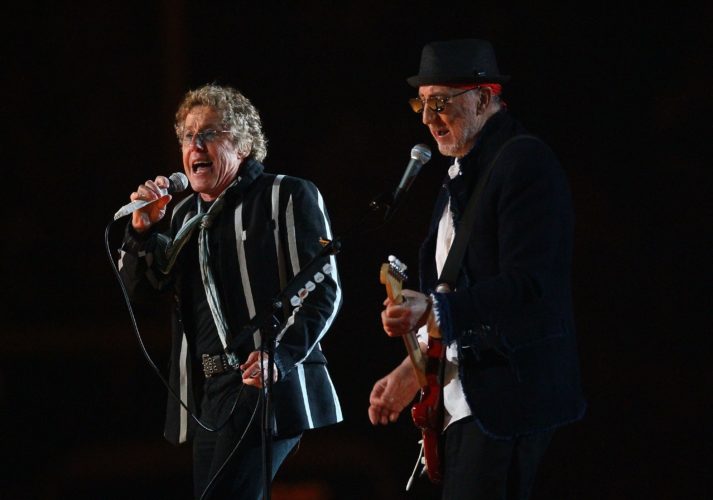
The Who’s Pete Townshend was influenced by the Indian spiritual master Meher Baba and the composer Terry Riley, who was credited with pioneering the minimalist style of composition. At one point in Townshend’s songwriting he merged the two, and the result was “Baba O’Riley”, which was released as a single in 1971. It was originally written for the rock opera Lifehouse, the intended follow-up to the hugely successful Tommy musical of 1969, but Lifehouse was abandoned before it got on its feet.
In 2018, Roger Daltrey said “Baba O’Riley” was a warning to kids everywhere not to spend too much time on social media.
35. “Be My Baby” — The Ronettes
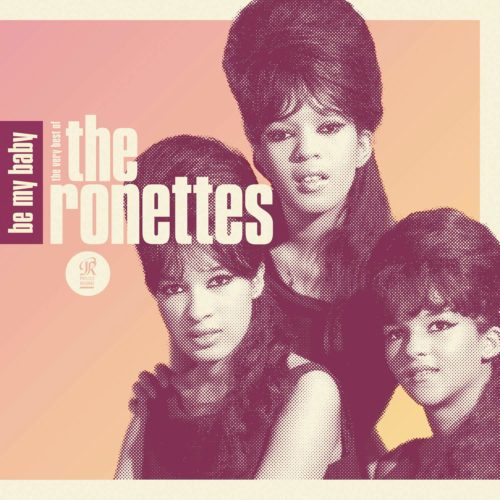
“Be My Baby” is included in “best song” rankings by Rolling Stone, NME, Time and Pitchfork, among many others. Another Phil Spector production, it featured a full orchestra and a young Cher on backing vocals.
“The things Phil was doing were crazy and exhausting,” said Larry Levine, Spector’s engineer. “But that’s not the sign of a nut. That’s genius.”
34. “Born To Run” — Bruce Springsteen
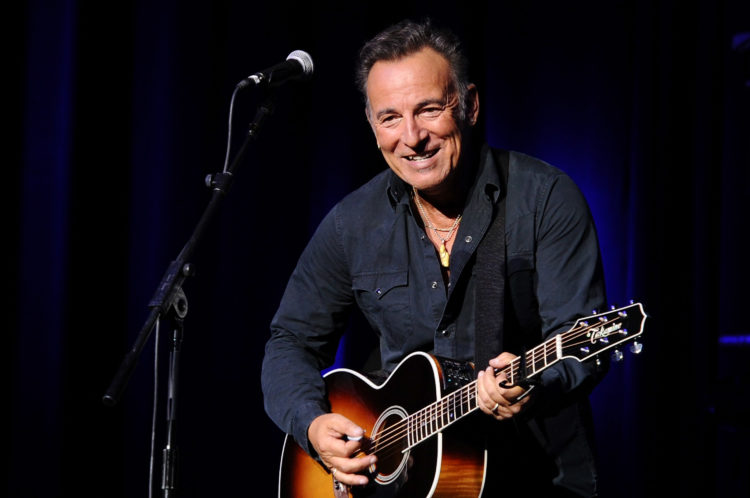
The title song of Springsteen’s 1975 album, “Born to Run” was his most ambitious recording to date.
“I wanted to make the greatest rock record I’d ever heard,” he told Rolling Stone. It was his first global single release, although it only broke into the top 20 in the U.S. charts. It became an underground hit; according to The Atlantic, demand for the song was so strong in Philadelphia that WFIL, the city’s top-40 morning station, aired it several times a day.
33. “Behind Blue Eyes” — The Who

“Behind Blue Eyes”, recorded in 1971, was reportedly inspired by Pete Townshend being tempted by a groupie at a Who concert in Denver the previous year. Instead of succumbing to temptation, Townshend reportedly went back to his hotel room alone and wrote a prayer, beginning with the words, “When my fist clenches, crack it open.” These words later appeared as lyrics in “Behind Blue Eyes.”
The song featured on the band’s fifth album “Who’s Next” and has been covered by numerous artists, most famously by Limp Bizkit in 2003.
32. “La Bamba” — Ritchie Valens
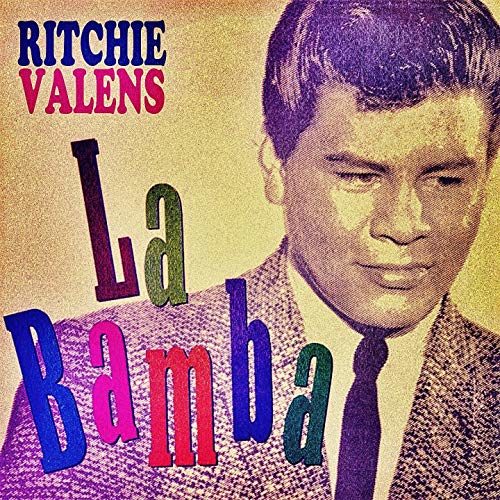
The Los Lobos cover of Mexican folk song “La Bamba”, which was the title track of the 1987 film starring Lou Diamond Phillips as rock ‘n’ roll star Ritchie Valens, is the most famous version of the song. However, it’s Valens’ 1958 adaptation that appears in the Ranker chart as well as Rolling Stone’s top 500; in fact, it’s the only song on the list sung in a language other than English.
Around the world, “La Bamba” is one of the best-known songs from the early rock ‘n’ roll era.
31. “Hound Dog” — Elvis Presley
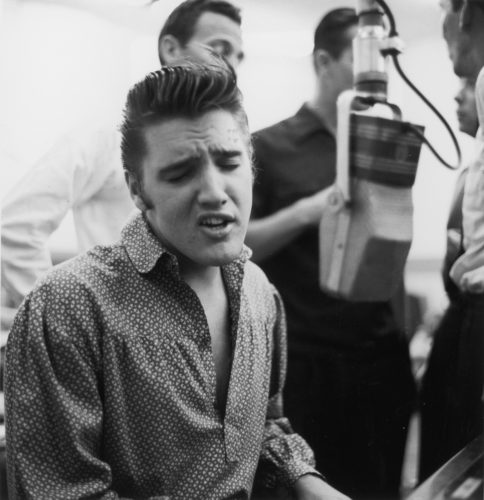
“Hound Dog” was a hit for R&B singer Willie Mae “Big Mama” Thornton before Elvis Presley sang it, but it’s Presley’s version that ranks No. 19 on the Rolling Stone top 500. Presley included the song in his set list in 1956 after hearing Freddie Bell and the Bellboys perform it in Las Vegas. Famously, Presley serenaded a basset hound (wearing a top hat) on TV’s “Steve Allen Show” later that year.
Presley later said, “It was the most ridiculous appearance I ever did and I regret ever doing it.” But “Hound Dog” was his best-selling single, as well as one of the best-selling singles of all time.
30. “Rock Around The Clock” — Bill Haley And The Comets
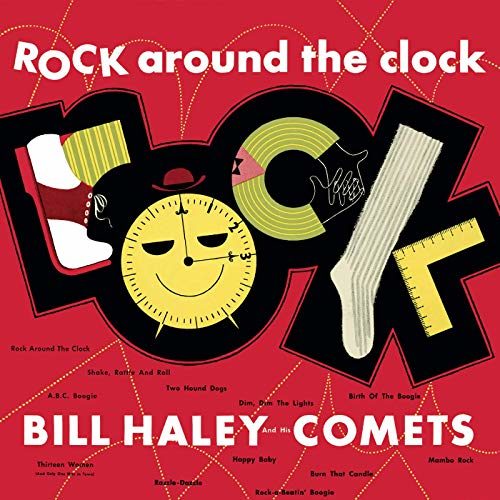
The best-known (and most successful) version of the rock ‘n’ roll classic “Rock Around the Clock” is by Bill Haley and The Comets. Released in 1954, it hit the top spot in the U.S. and U.K. charts — partly due to being played during the opening credits of the 1955 crime movie “The Blackboard Jungle.”
“Rock Around the Clock,” which was described by The Guardian as “the world’s first rock anthem,” caused rioting in cinemas in schools, was arguably the first teen anthem and paved the way for modern pop music.
29. “Break On Through (To The Other Side)” — The Doors
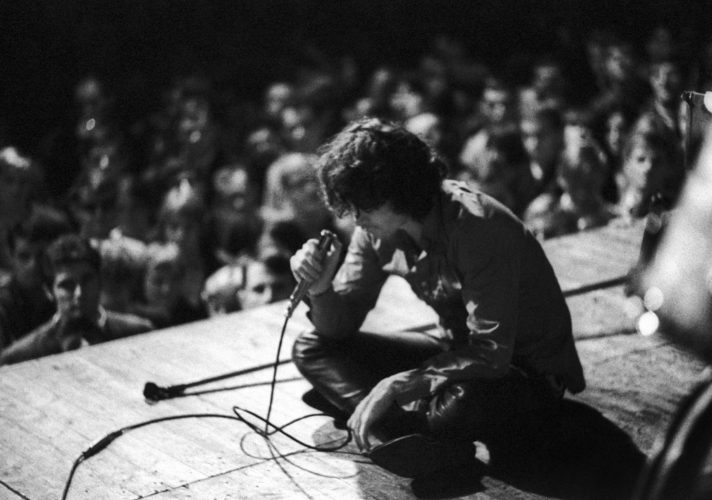
The first track on The Door’s eponymous debut album, “Break on Through (To the Other Side)” was the band’s first single release. It didn’t do well on its first release, reaching only No. 126 on the U.S. charts, but it remains one of their best-known and most-loved tracks. In 1967, Jim Morrison revealed in an interview with Hit Parader magazine that he wrote this song when he was crossing canals in Venice.
“I was walking over a bridge,” he said. “I guess it’s one girl, a girl I knew at the time.” The band’s label, Elektra Records, deleted the word “high” from the line “she gets high,” in anticipation of a drug reference affecting the chance of radio airplay. In fact, all re-issues of the track had the word “high” deleted until the 1990s.
28. “Here Comes The Sun” — The Beatles
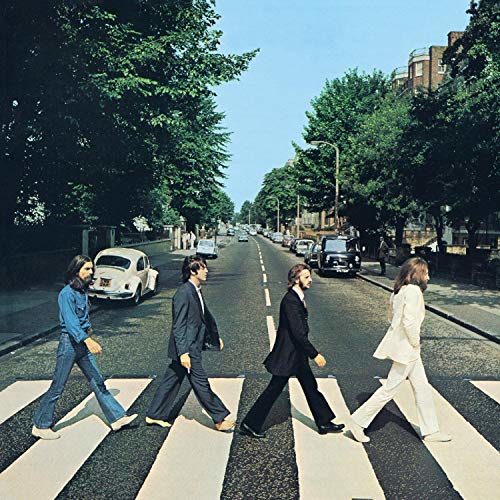
“Here Comes the Sun” features on The Beatles’ 1969 album “Abbey Road”. Most Beatles songs were written by Paul McCartney and/or John Lennon, but this one was all down to George Harrison (and the increasing influence of Indian classical music on the band’s lead guitarist is clear).
Reportedly, Harrison wrote “Here Comes the Sun” at the home of his friend Eric Clapton, where he had gone in order to avoid attending a meeting at the band’s Apple Corps organization. It’s a firm favorite amongst Beatles fans, and as of January 2020, it’s the most streamed of all their songs in the U.K.
27. “Rebel Rebel” — David Bowie

Often described as David Bowie’s farewell to the glam rock movement he helped spearhead, the 1974 release “Rebel Rebel” is about a boy who rebels against his parents by wearing makeup and women’s clothes. Its highest U.S. chart position was No. 16 (on the Billboard Rock Songs). It reached No. 5 in the U.K. singles chart and remains a rousing “glam anthem” across the world today.
“Rebel Rebel” is also one of Bowie’s most-covered tracks; everyone from Bryan Adams to the Smashing Pumpkins.
26. “You Really Got Me” — The Kinks
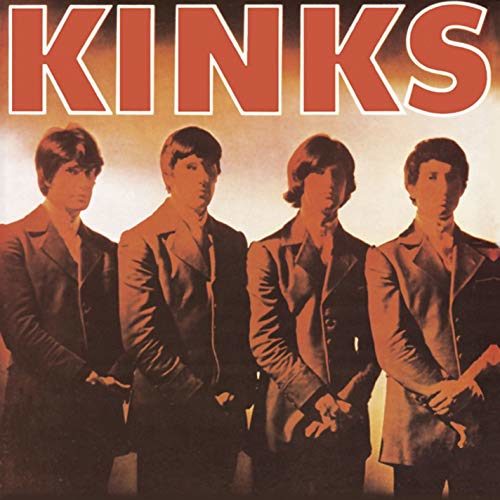
Written by Ray Davies for The Kinks’ third single, “You Really Got Me” reached No. 1 on the U.K. singles chart in 1964. In the U.S., it peaked at No. 7 in the U.S. According to Rolling Stone, the band’s 17-year-old guitarist Dave Davies used a razor on his amp’s speaker cone to create the unforgettable sound on the riff at the heart of the track.
“The song came out of a working-class environment,” he said. “People fighting for something.”
25. “Purple Haze” — The Jimi Hendrix Experience
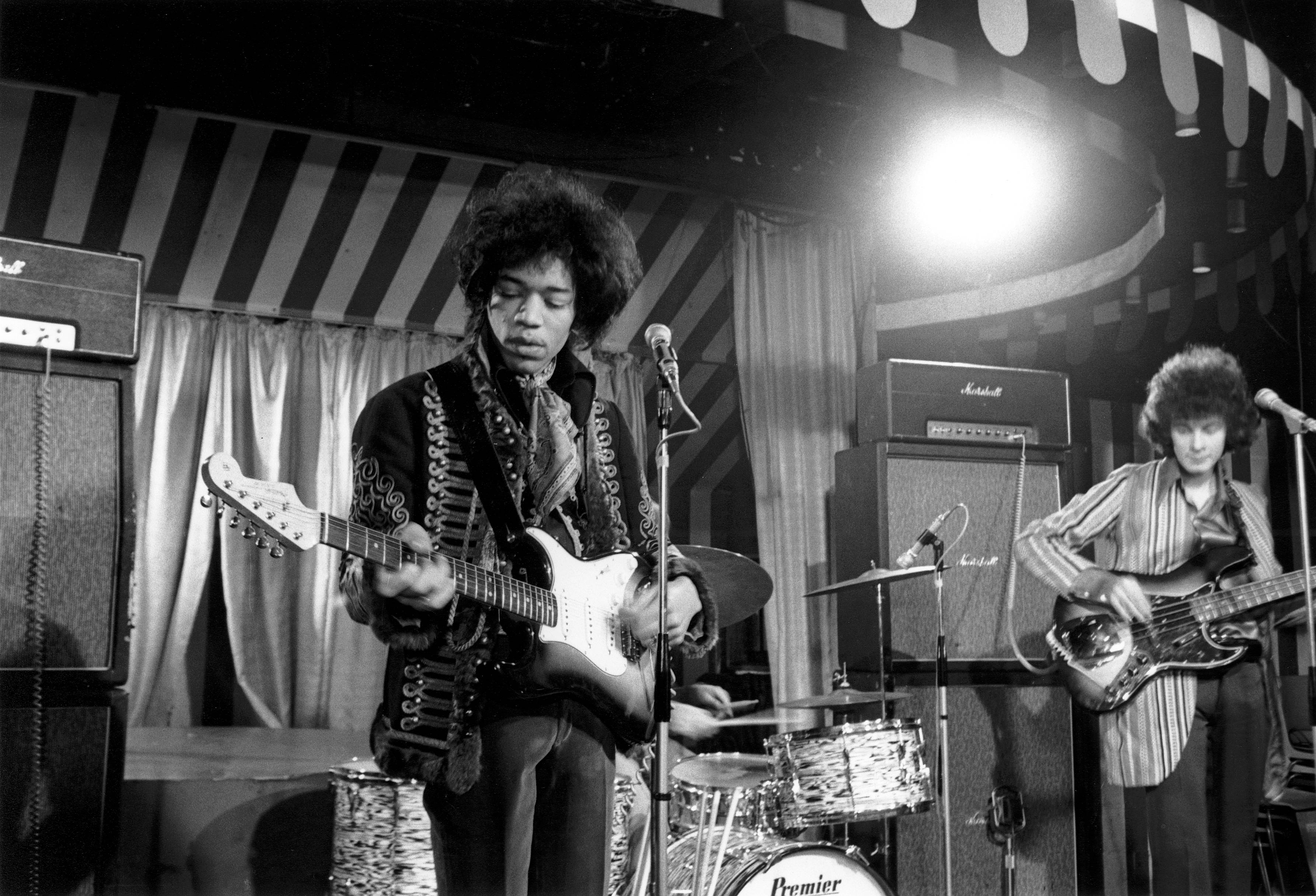
At No. 17 on Rolling Stone’s list of the best songs is “Purple Haze”, written by Jimi Hendrix and released as the second single by The Jimi Hendrix Experience in 1967. One of Hendrix’s best-known songs and many people’s first taste of his inimitable psychedelic rock sound, it regularly ranks high on lists of the best guitar songs, including No. 2 by Rolling Stone and No. 1 by Q magazine. In 2013, Rolling Stone readers voted it the fifth best Hendrix song. It may also have one of the most misheard lines in rock history — for future reference, Hendrix sings “Excuse me while I kiss the sky,” not “Excuse me while I kiss this guy.”
24. London Calling — The Clash
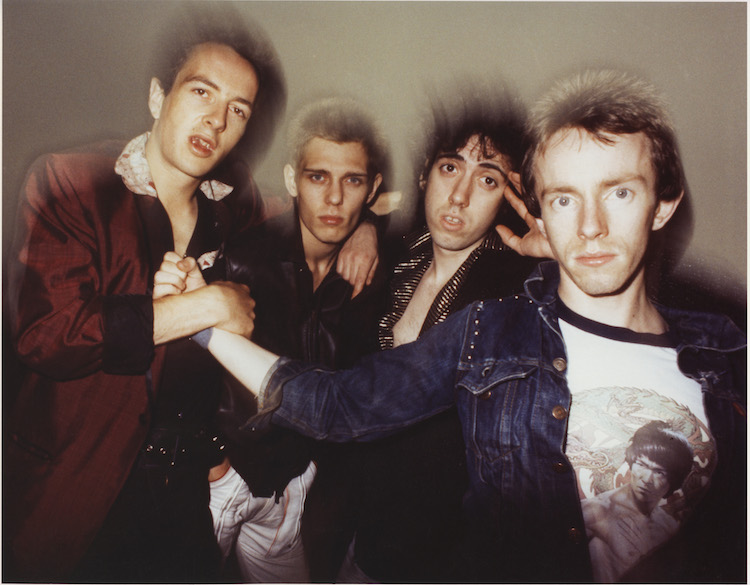
What was created under difficult personal circumstances (lack of management and rising debt) and reflected concern about world events went on to become a signature song for punk band The Clash.
“We felt that we were struggling,” lead vocalist Joe Strummer said, “about to slip down a slope or something, grasping with our fingernails. And there was no one there to help us.”
“London Calling” was released as the only single in the United Kingdom from the album of the same name and reached No. 11 in the charts in 1980, becoming the band’s highest-charting single until “Should I Stay or Should I Go” hit No. 1 10 years later.
23. “What A Wonderful World” — Louis Armstrong
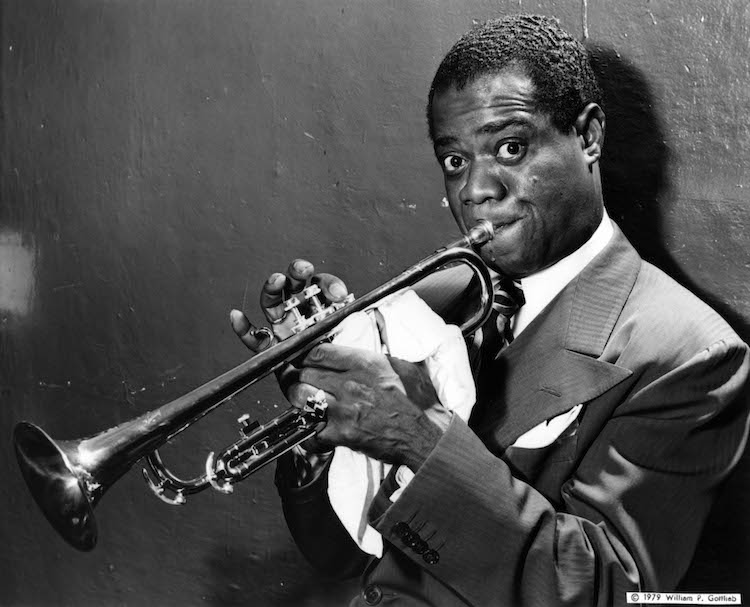
At No. 15 on the Ranker list of the best songs is “What a Wonderful World”, which was written by Bob Thiele (as “George Douglas”) and George David Weiss and first recorded by Louis Armstrong. It topped the pop chart in the U.K. in 1967 but only hit the No. 32 spot in the U.S., though it was inducted in the Grammy Hall of Fame in 1999.
Other artists who’ve covered the song include Eva Cassidy and Katie Melua, The Flaming Lips, Tony Bennett (who was reportedly offered the song before Armstrong and turned it down) and k.d. lang, Joey Ramone, and Nick Cave and Shane MacGowan.
22. “A Change Is Gonna Come” — Sam Cooke
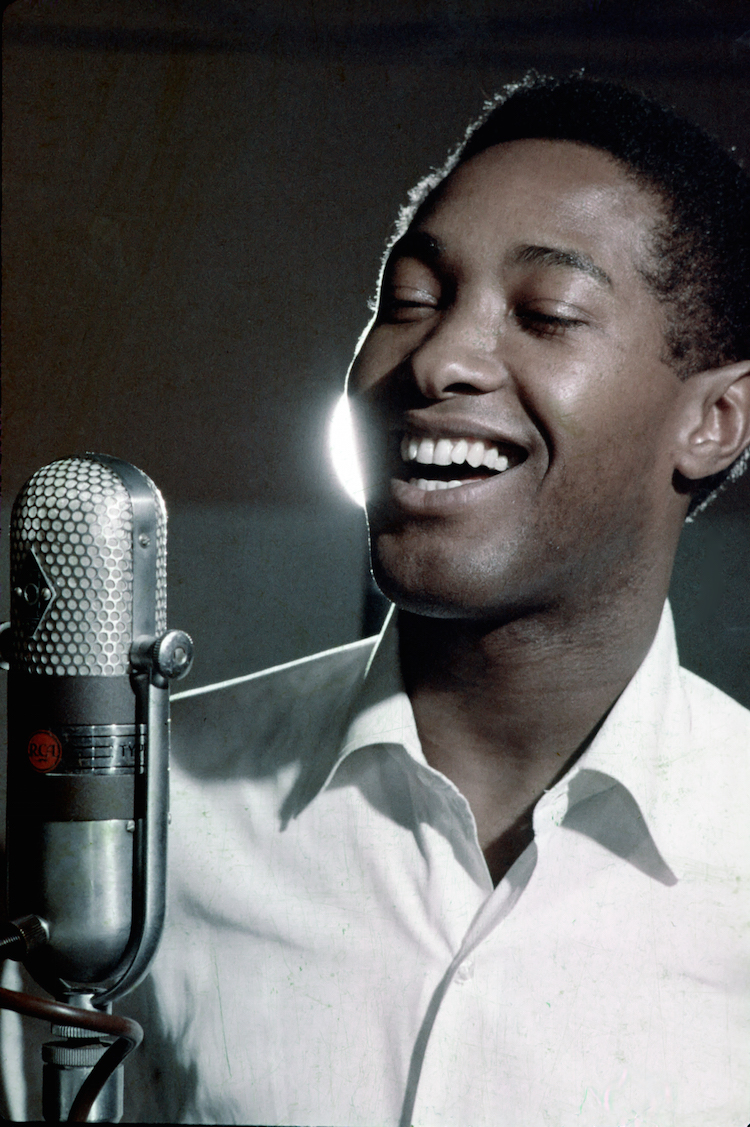
Sam Cooke’s 1964 hit “A Change is Gonna Come” was released as the B-side to his posthumous hit single “Shake” just days after his funeral in December 1964 (he was fatally shot at a motel in Los Angeles). Despite not being a huge chart success — it peaked on the national pop chart at No. 31 and climbed to No. 9 on the R&B chart — it was one of the biggest anthems of the civil rights movement.
In 2007, “A Change is Gonna Come” was chosen by the National Recording Registry for preservation in the Library of Congress for being “culturally, historically, or aesthetically important.”
21. “The Sound Of Silence” — Simon & Garfunkel
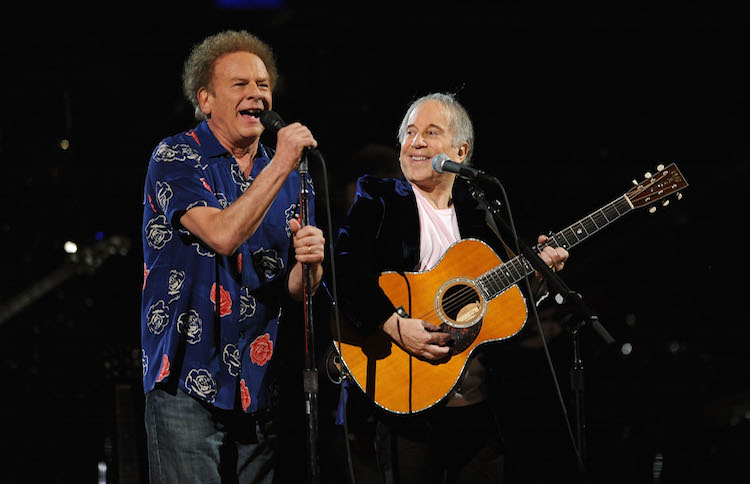
Ranking 10th in the Ranker community, Simon & Garfunkel’s “The Sound of Silence” was recorded in 1964 for inclusion on the duo’s debut album, “Wednesday Morning, 3 A.M.” The song hit No. 1 on the Billboard Hot 100 in January 1966 and was a top 10 hit in many other countries, including Australia, Austria, West Germany, Japan and the Netherlands. It was also in the movie “The Graduate,” for which Simon & Garfunkel also wrote “Mrs. Robinson.”
In an interview with NPR, Paul Simon (who wrote the song at age 21) said the key to “The Sound of Silence” was “the simplicity of the melody and the words, which are youthful alienation.”
20. “A Day In The Life” — The Beatles
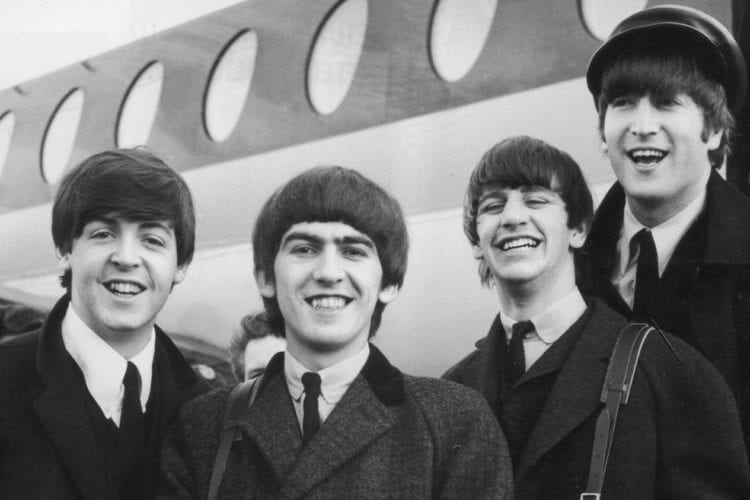
One of the last true Lennon-McCartney collaborations and widely considered to be one of The Beatles‘ greatest achievements, “A Day in the Life” was the dramatic conclusion to the 1967 album “Sgt. Pepper’s Lonely Hearts Club Band”. Many artists have covered the track, including Jeff Beck, Barry Gibb, The Fall and Phish, and Paul McCartney himself has included it in his live performances since 2008.
In 2011, Rolling Stone ranked it first on its list of The Beatles’ greatest songs, and according to Acclaimed Music, it’s the third most celebrated song in popular music history.
19. “My Generation” — The Who
Rolling Stone’s 11th best song of all time is The Who’s “My Generation”, one of the band’s most recognizable hits. Other accolades include 13th place on VH1’s list of the 100 Greatest Songs of Rock & Roll and 37th place on VH1’s Greatest Hard Rock Songs.
NME includes it in their 100 Best Songs of the 1960s, writing, “Taking in a timeless sense of youthful disaffection via a countercultural, Mod lens, Pete Townshend’s age-defying ditty distilled what it feels like to be young, energised and in the prime of life into 3:18 minutes of bristling hedonism.”
18. “Light My Fire” — The Doors
Claiming the 16th spot on the Ranker community’s list of the best songs, The Doors’ “Light My Fire” was released in 1967 on the band’s eponymous album. As an edited single, it spent three weeks at No. 1 on the Billboard Hot 100 chart and was responsible for taking the band’s career to another level. Notably, it got them an invite to perform on “The Ed Sullivan Show,” but on the condition that Morrison didn’t sing the line, “girl, we couldn’t get much higher.”
However, he did include the forbidden line, and it was their first and last performance on the show.
17. “What’d I Say” — Ray Charles
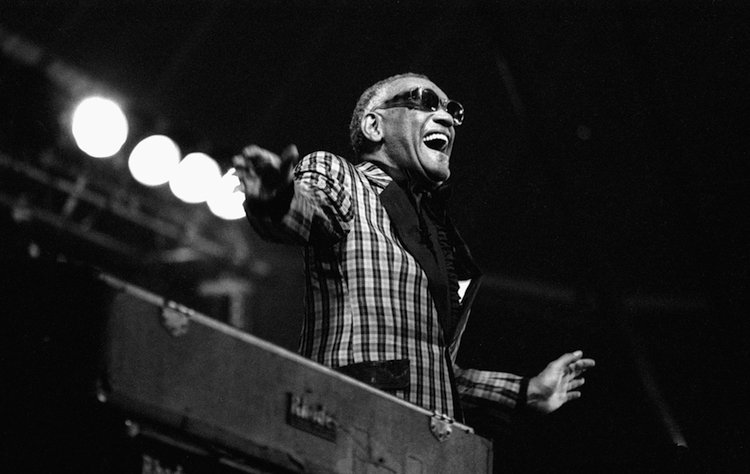
Rolling Stone’s pick for the 10th greatest song of all time, “What’d I Say” by Ray Charles was famously composed late one evening in 1958 when Charles and his band were on stage in Pittsburgh and had some time to fill.
“I said to the guys, ‘Hey, whatever I do, just follow me’,” Charles told David Letterman. “And I said the same thing to the girls, I said, ‘Whatever I say, just repeat it, I don’t care what it is.'”
The reaction of the audience was enthusiastic, and “What’d I Say” went on to become Charles’ first top 10 pop single. Throughout his career, Charles closed every gig with the song, and it was added to the National Recording Registry (a list of songs that “are culturally, historically, or aesthetically important, and/or inform or reflect life in the United States”) in 2002.
16. “Paint It Black” — The Rolling Stones
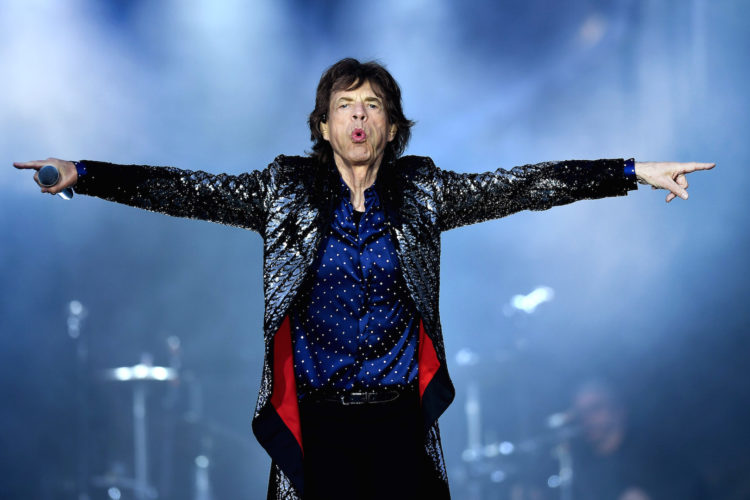
Claiming the fifth spot on Ranker’s list of the best songs of all time is “Paint it Black,” the 1966 single released by The Rolling Stones that reached No. 1 on both the Billboard Hot 100 and the U.K. Singles Chart; it became the band’s third No. 1 hit single in the U.S. and sixth in the U.K.
Rolling Stone readers ranked “Paint It Black” as the band’s third-greatest single, after “Gimme Shelter” and “Sympathy for the Devil.” In 2004, Keith Richards said that what made “Paint It Black” great was Bill Wyman on the organ.
“It didn’t sound anything like the finished record until Bill said, ‘You go like this,'” Richards said in 2004.
15. “Respect” — Aretha Franklin
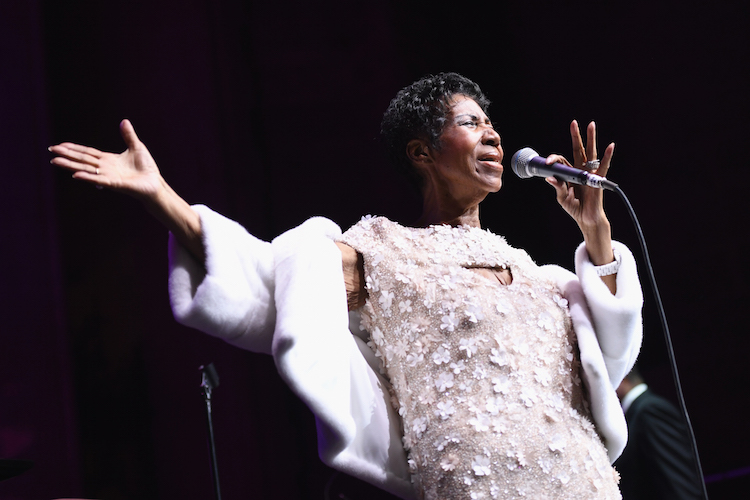
Written and first recorded by Otis Redding in 1965, it was soul singer Aretha Franklin who turned “Respect” into an anthem for female empowerment two years later. She made it her own by adding the “R-E-S-P-E-C-T” chorus and the backup singers’ refrain of “Sock it to me, sock it to me, sock it to me…” and it remains one of Franklin’s signature songs.
“Respect” earned her two Grammy Awards in 1968 for Best Rhythm & Blues Recording and Best Rhythm & Blues Solo Vocal Performance, Female, and it was inducted into the Grammy Hall of Fame in 1987. According to Rolling Stone, it’s the fifth greatest song of all time.
14. “All Along The Watchtower” — The Jimi Hendrix Experience
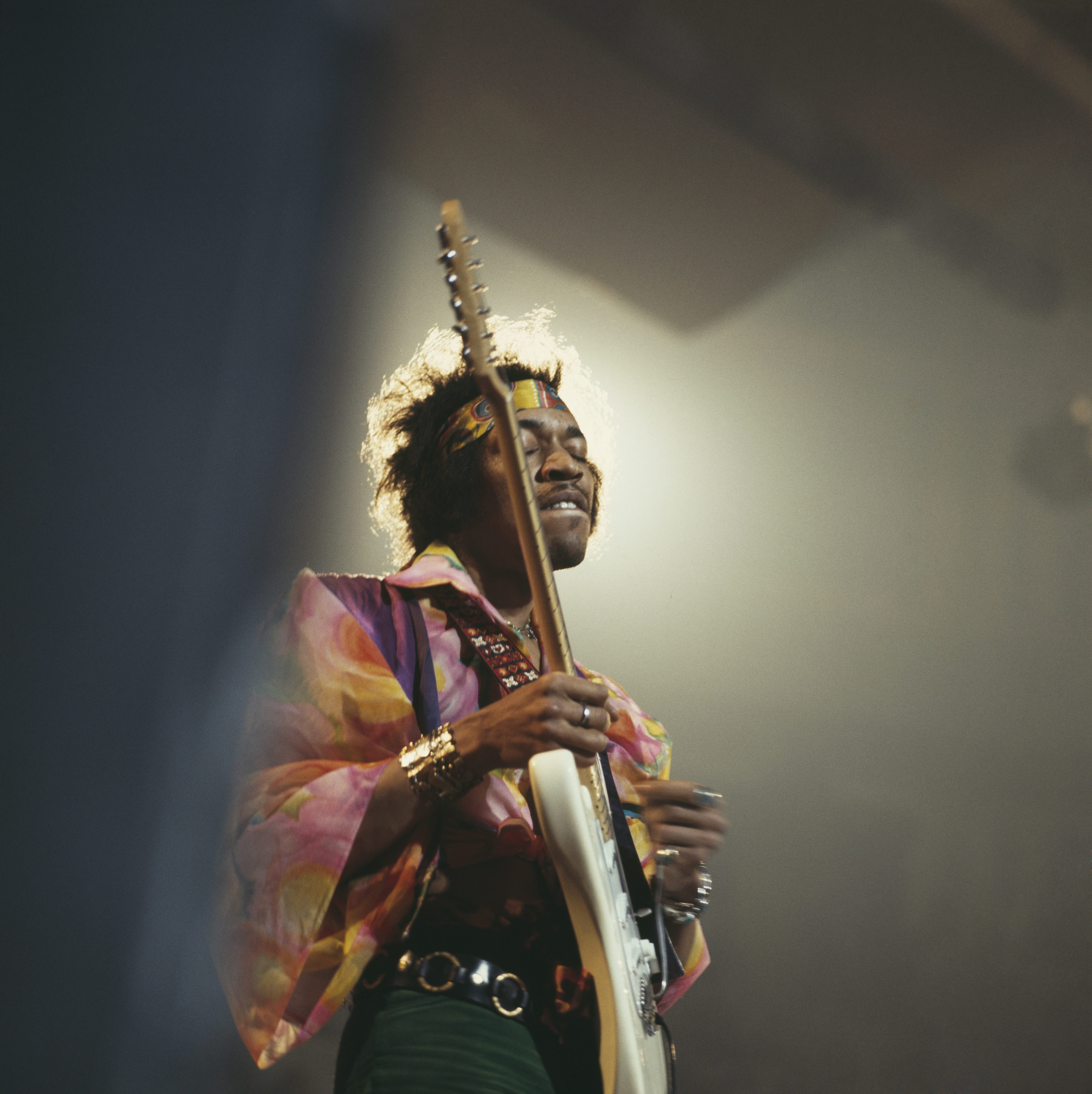
“All Along the Watchtower” was written by Bob Dylan, but it’s the version by The Jimi Hendrix Experience that the Ranker community ranks the fourth best song of all time.
The song first appeared on Dylan’s 1967 album John Wesley Harding and six months later was recorded by Hendrix for the album Electric Ladyland. It was a top-20 hit for Hendrix in 1968, and that version ranks 47th on Rolling Stone’s list of the all-time greatest songs.
Neil Young, U2 and Eddie Vedder are a few of the many other artists who have covered the song.
13. What’s Going On — Marvin Gaye
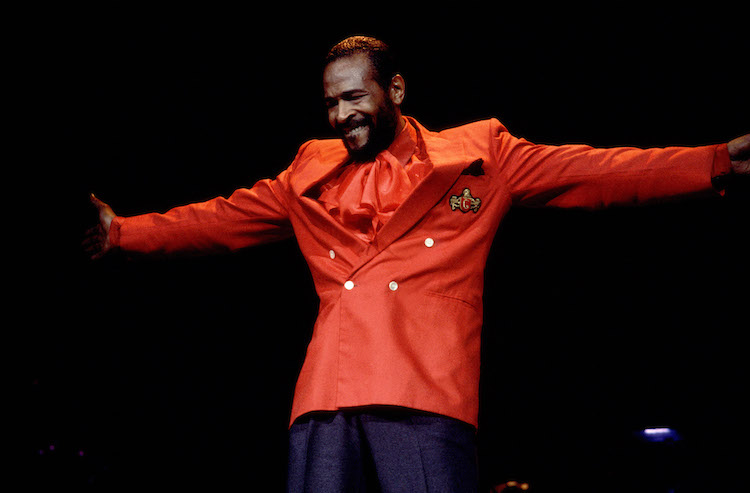
Marvin Gaye’s politically-charged 1971 release “What’s Going On”, inspired by police brutality in California, was initially rejected as uncommercial but later reached No. 2 on the Billboard Hot 100 and became one of the star’s most successful Motown songs.
Rolling Stone describes it as “an exquisite plea for peace on Earth” and ranks it fourth on their list of the greatest songs of all time.
“Marvin Gaye’s peerless voice sent a message to millions,” wrote The Guardian.
12. “Stairway To Heaven” — Led Zeppelin
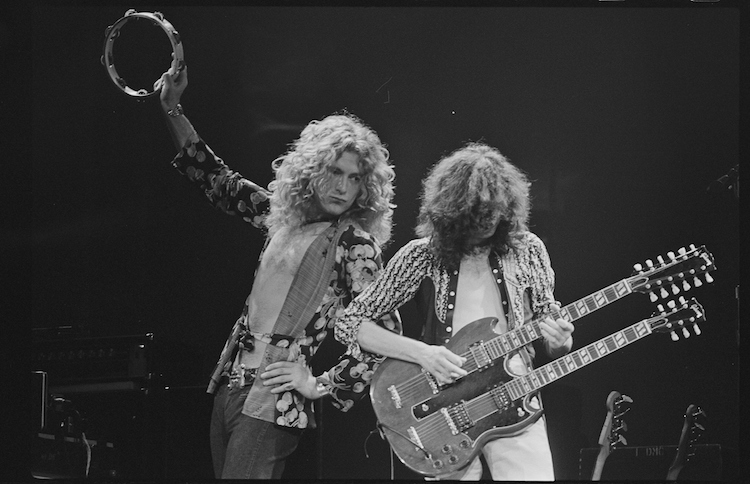
Led Zeppelin’s epic 1971 release “Stairway to Heaven” is a big hit within the Ranker community, coming in at their seventh best song of all time.
Planet Rock readers voted it the greatest rock song of all time, giving it more than twice the amount of votes of its closest rival, Queen’s “Bohemian Rhapsody”, and it has also been voted the U.K.’s favorite rock anthem.
Despite the fact that it was never commercially released as a single in the U.S., it was the most requested song on FM radio stations in the 1970s, proving the power of the band’s growing fan base.
11. “Like A Rolling Stone” — Bob Dylan
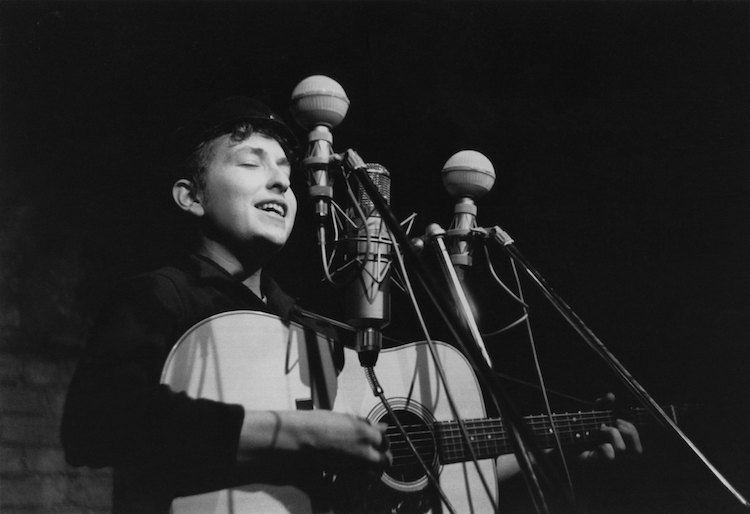
Rolling Stone ranks Bob Dylan’s 1965 release “Like a Rolling Stone” the greatest song of all time, writing, “No other pop song has so thoroughly challenged and transformed the commercial laws and artistic conventions of its time, for all time.”
A longer than average track at six minutes, 13 seconds, radio stations were initially reluctant to play it, but it nonetheless became a huge worldwide hit, reaching No. 2 on the Billboard Hot 100. It’s been covered by everyone from The Jimi Hendrix Experience to Green Day.
According to review aggregator Acclaimed Music, “Like a Rolling Stone” is the statistically most acclaimed song of all time. At a 2014 auction, Dylan’s handwritten lyrics to the song fetched $2 million, a world record for a pop-music manuscript.
10. “God Only Knows” — The Beach Boys
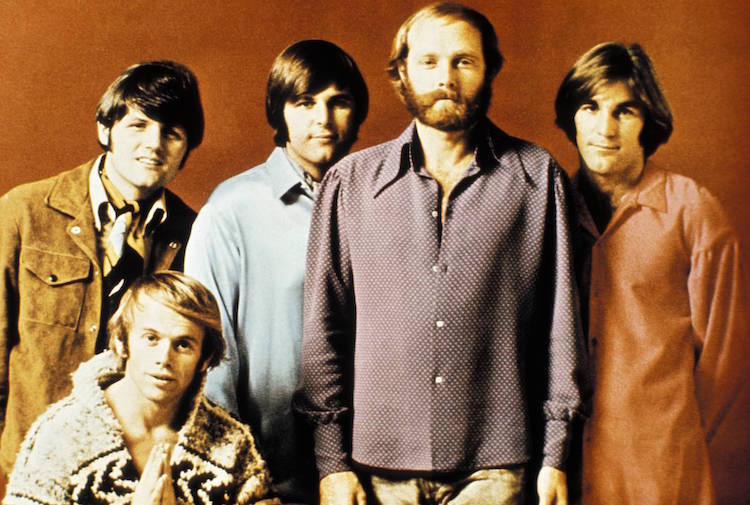
Voted 25th by Rolling Stone, 19th by the Ranker community, one of the 500 songs that shaped rock and roll by the Rock and Roll Hall of Fame and the greatest song of the 1960s by Pitchfork Media, “God Only Knows” wasn’t the biggest chart hit for the Beach Boys (it was released as the B-side of “Wouldn’t It Be Nice” in the U.S.), but it remains a firm fan favorite. In fact, Rolling Stone readers voted it the best Beach Boys song, and even fellow ’60s creative genius Paul McCartney has said it’s his favorite song of all time.
9. “Blowin’ In The Wind” — Bob Dylan
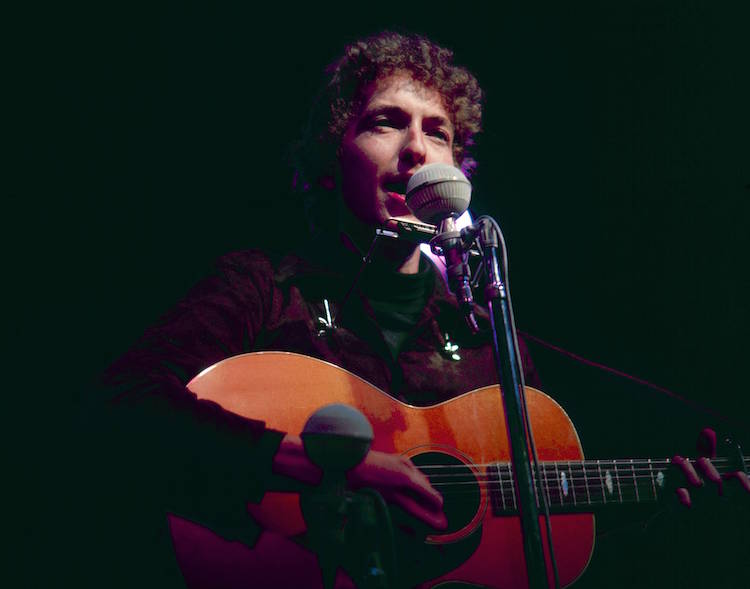
“Blowin’ in the Wind” has been variously described as “Dylan’s first important composition,” the most famous protest song ever, an anthem of the civil rights movement and the song Dylan is best known for, so it’s perhaps a surprise that this song didn’t chart for Bob Dylan. However, it was a massive hit for the folk band Peter, Paul and Mary in the summer of 1963, and in 1994 was inducted into the Grammy Hall of Fame.
It ranks No. 14 on Rolling Stone’s list of the 500 greatest songs of all time, and Ranker voters place it at No. 17.
8. “I Want To Hold Your Hand” — The Beatles
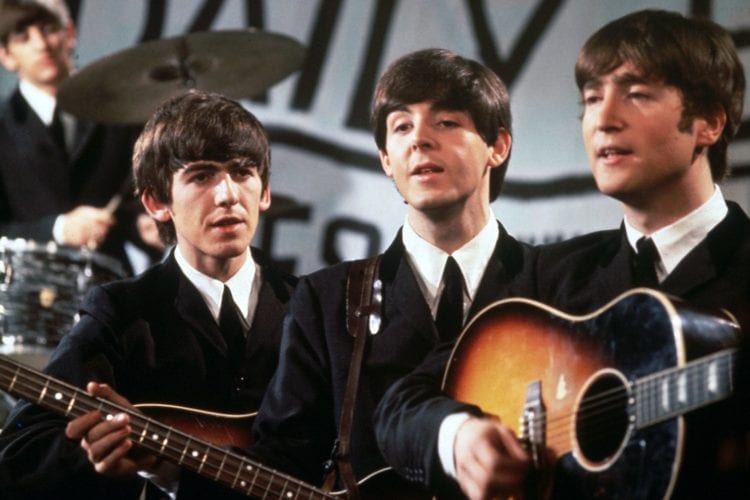
Another of several “best song” entries for The Beatles, “I Want to Hold Your Hand” is sixth on Ranker and 16th on Rolling Stone. Released in 1963, it was the group’s first No. 1 hit in the U.S. and stayed in the U.K. top 50 for a total of 21 weeks.
In 1980, John Lennon said the song was written “eyeball to eyeball” with McCartney.
“I remember when we got the chord that made the song,” he recalled. “We were in Jane Asher’s house, downstairs in the cellar playing on the piano at the same time. And we had, ‘Oh you-u-u/ got that something…’ And Paul hits this chord, and I turn to him and say, ‘That’s it!’ I said, ‘Do that again!’ In those days, we really used to absolutely write like that — both playing into each other’s noses.”
7. “Johnny B. Goode” — Chuck Berry
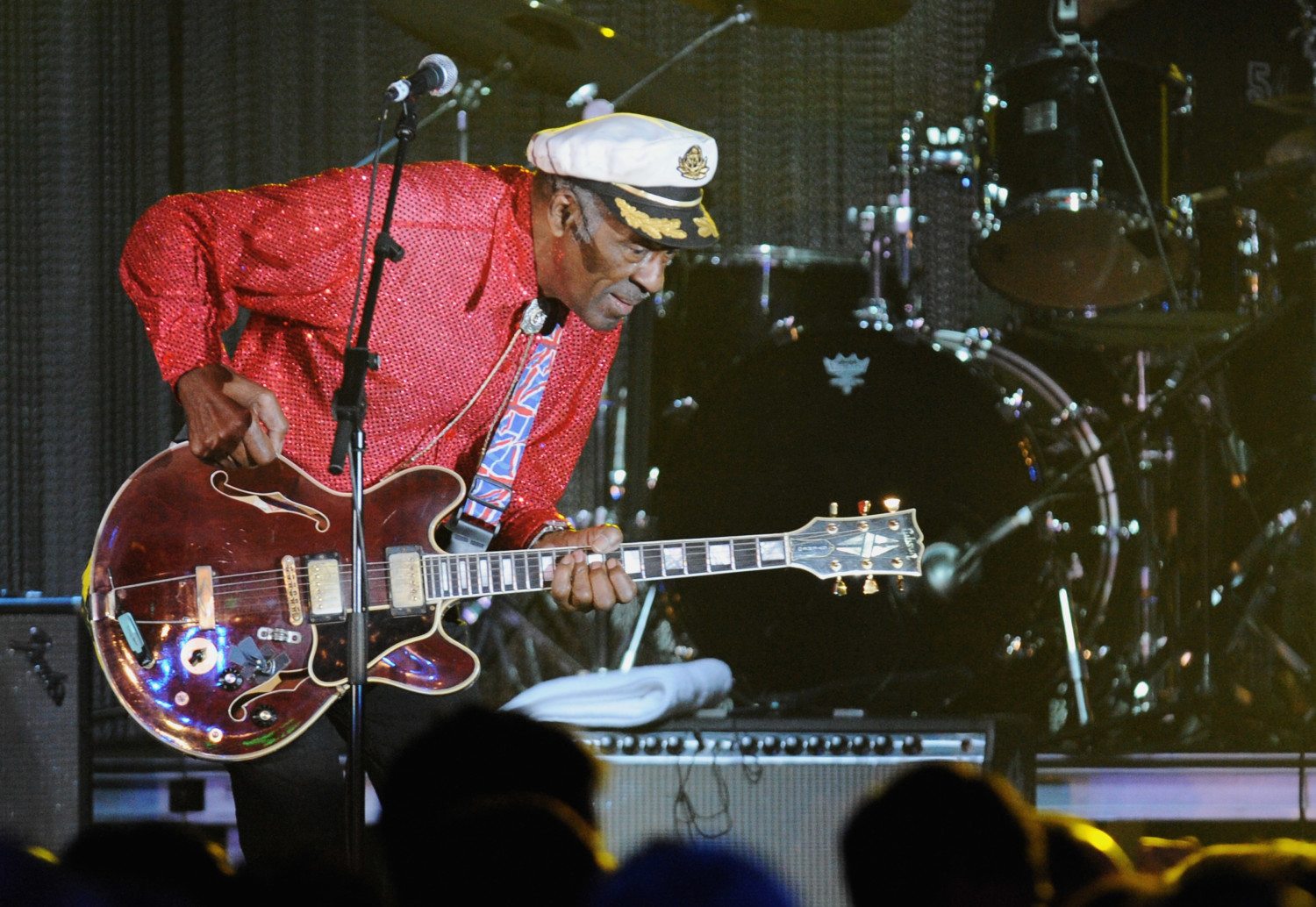
Rolling Stone credits Chuck Berry’s 1958 hit “Johnny B. Goode” as “the first rock & roll hit about rock & roll stardom” and “the greatest rock & roll song about the democracy of fame in pop music.”
The semi-autobiographical song about an illiterate “country boy” from the New Orleans area who plays the guitar “just like ringing a bell” peaked at No. 8 on the Billboard Hot 100. It was inducted into the Grammy Hall of Fame in 1999 for its influence as a rock-and-roll single and is No. 1 on Rolling Stone’s 100 Greatest Guitar Songs of All Time list. It’s also a hit with Ranker voters, who put it at No. 11.
6. “Smells Like Teen Spirit” — Nirvana
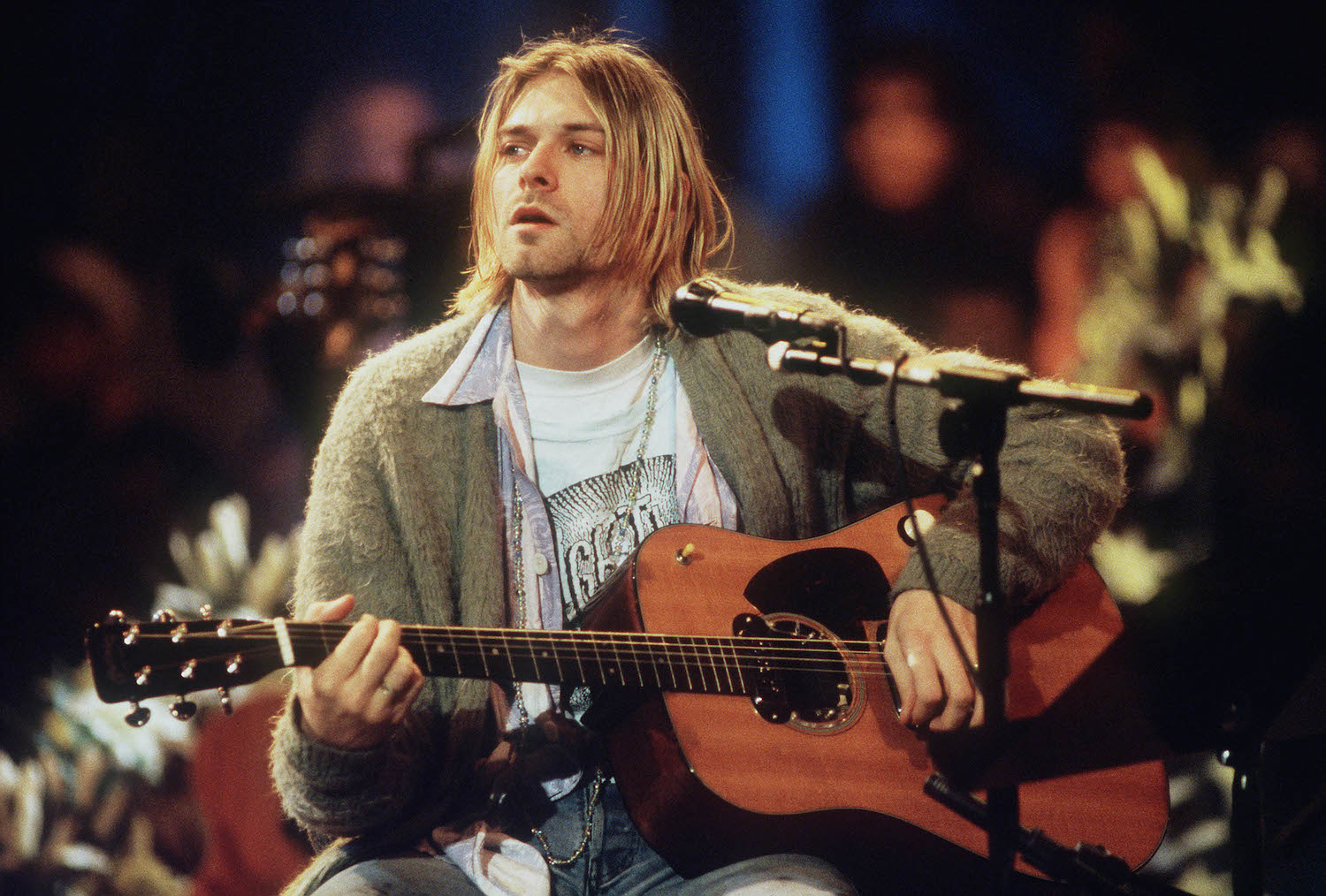
The only ’90s release on the list, Nirvana’s “Smells Like Teen Spirit” became an anthem for an apathetic generation. Named after a brand of deodorant for girls, the song was the band’s biggest hit in most countries, has been certified platinum (1 million copies shipped) by the Recording Industry Association of America and sent the album “Nevermind” to the top of the charts at the start of 1992. But the song put unwanted pressure on the band.
“There are many other songs that I have written that are as good, if not better,” claimed frontman Kurt Cobain. Rolling Stone puts “Smells Like Teen Spirit” at No. 9, while Ranker voters have it at No. 13.
5. “Good Vibrations” — The Beach Boys
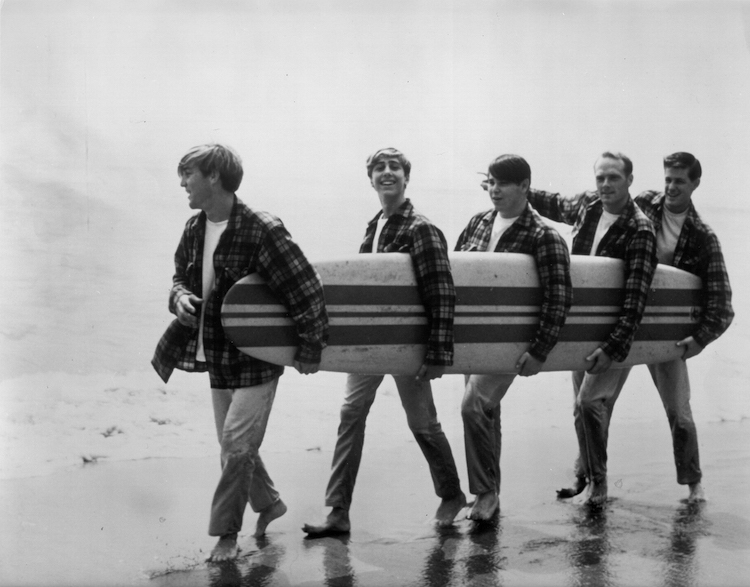
“Good Vibrations” was a huge hit for the Beach Boys in 1966, scoring them No. 1s in both the U.S. and the U.K. as well as many other countries.
At the time, it was the most expensive single ever recorded, with a studio bill of $50,000. Brian Wilson composed and produced the song, which was inspired by his fascination with cosmic vibrations — stemming from a moment in his childhood when his mother tried to explain why dogs barked at some people and not others.
“A dog would pick up vibrations from these people that you can’t see but you can feel. And the same thing happened with people,” Wilson said. One of his goals with the song was to create a better song than “You’ve Lost That Lovin’ Feelin,” and both Rolling Stone and Ranker believe he did it, ranking “Good Vibrations” at No. 6 and No. 8, respectively.
4. “Yesterday” — The Beatles
The Beatles’ most famous ballad was voted third-best by the Ranker community and 13th by Rolling Stone. It was also ranked third on BMI’s list of the Top 100 Songs of the Century and was voted the best song of the 20th century in a 1999 BBC Radio 2 poll of music experts and listeners.
“Yesterday” only features one of the Fab Four: McCartney’s vocal over a string quartet. McCartney described it as “one of the most instinctive songs I’ve ever written.” The melody came to him in a dream while he was staying at his then-girlfriend Jane Asher’s house. But initially, the band was “a little embarrassed” about recording a song that was so far from their rock-and-roll roots.
3. “(I Can’t Get No) Satisfaction” — The Rolling Stones
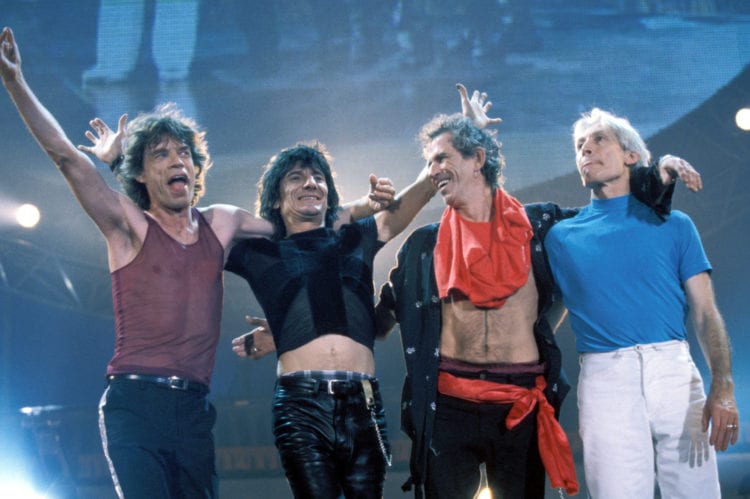
“(I Can’t Get No) Satisfaction,” deemed by Rolling Stone to be the second-best song of all time, gave The Rolling Stones their first U.S. No. 1, and despite being initially restricted to pirate radio stations in the U.K. (due to its sexually suggestive content), it later topped the charts there, too.
The song’s unmistakable riff came to Keith Richards in a dream one night in May 1965, in his motel room in Clearwater, Florida, on the Rolling Stones’ third U.S. tour. According to Rolling Stone, “He woke up and grabbed a guitar and a cassette machine. Richards played the run of notes once, then fell back to sleep.
“On the tape,” he said later, “you can hear me drop the pick, and the rest is snoring.”
2. “Hey Jude” — The Beatles
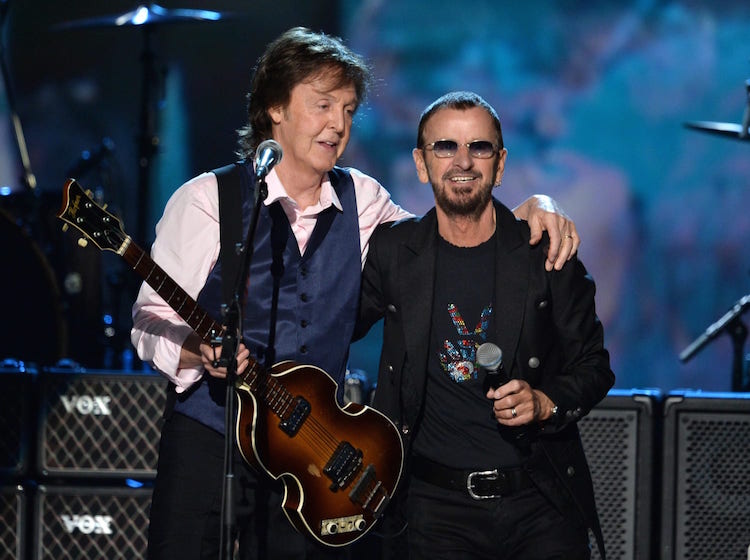
It’s the best song of all time, according to thousands of Ranker voters, and it comes in at No. 8 on the Rolling Stone list. “Hey Jude,” the first single release on The Beatles’ Apple label, was a No. 1 hit in many countries around the world and the top-selling single of 1968 in the U.K., U.S., Australia and Canada.
The message behind the song is touching and deeply personal: McCartney wrote it on his way to visit Lennon’s soon-to-be-ex-wife, Cynthia, and their son, Julian. McCartney once said the opening lines were “a hopeful message for Julian: ‘Come on, man, your parents got divorced. I know you’re not happy, but you’ll be OK.'”
He later changed “Jules” to “Jude” — a name inspired by Jud from the musical “Oklahoma!”
1. “Imagine” — John Lennon
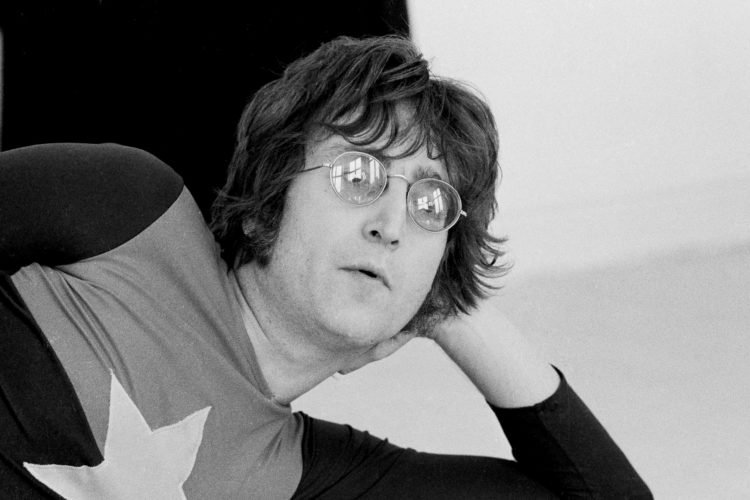
Voted second by the Ranker community and third by Rolling Stone, John Lennon’s “Imagine” is worthy of our top spot. First released in the U.S. in October 1971 and in the U.K. in October 1975, it was Lennon’s best-selling solo hit.
BMI named “Imagine” one of the 100 most-performed songs of the 20th century (it’s been covered by Madonna, Stevie Wonder, Lady Gaga, Elton John and many others, and since 2005 has preceded the New Year’s Time Square Ball drops in New York City), and it’s ranked No. 30 on the Recording Industry Association of America’s list of the 365 Songs of the Century.
Shortly before his death, Lennon said that much of the song’s content and lyrics came from his wife at the time, Yoko Ono, and in 2017, she received a co-writing credit.
Sponsored Content

